Sony BRAVIA 9 is undoubtedly a top-tier product, and there’s no "but" about it, as this is a fact, not a thesis. It’s evident everywhere you look how much effort the manufacturer has put into perfecting the dimming algorithms, which undoubtedly perform their role to every possible degree. Thanks to this, we can enjoy an incredibly deep black and an amazingly vivid image. And since we’re talking about the picture and backlighting, one cannot help but mention the quality of HDR effects, which will brighten the room, enveloping us in over 2000 nits of peak brightness. Such a result certainly looks impressive on paper, but you have to trust us that it’s even better in person. The manufacturer, known for its meticulous approach to image quality, has once again endeavoured to ensure that its television faithfully reproduces what the film director intended to convey, and it has succeeded brilliantly. The Sony Bravia 9 also offers an excellent user experience thanks to the Google TV system. The interface is intuitive, and with a rich library of apps, we have access to countless contents that we can tailor to our own preferences. The integration with Google Assistant allows for quick and convenient searching of favourite movies, shows, or music, as well as controlling other smart devices in the home. It’s these kinds of solutions that make using the television not just a pleasure but also simplifies daily life. Unfortunately, not everything is perfect. The Sony Bravia 9 still has room for improvement, particularly regarding the HDMI port configuration. Sony BRAVIA 9 has only two HDMI 2.1 ports, one of which is eARC, that is a port for a soundbar or home theatre system. For such an expensive piece of equipment, one might expect four full HDMI 2.1 ports, and the lack of Picture-in-Picture (PiP) functionality is also a drawback that can be annoying. Despite these shortcomings, it’s hard not to notice just how exceptional this equipment is. It’s the first LCD television that can truly compete with OLEDs. Infinite contrast, fantastic picture quality, zero compromises — Sony BRAVIA 9 is nearly perfect. Excellent picture, modern technologies, attention to detail make every viewing experience one you won’t forget.
- Matching (Score)
- Our verdict
- TV appearance
- Where to buy
- Contrast and black detail
- HDR effect quality
- Factory color reproduction
- Color reproduction after calibration
- Smoothness of tonal transitions
- Image scaling and smoothness of tonal transitions
- Blur and motion smoothness
- Console compatibility and gaming features
- Input lag
- Compatibility with PC
- Viewing angles
- TV efficiency during daytime
- Details about the matrix
- TV features
- Apps
- Playing files from USB
- Sound
Sony Bravia 9 (XR90) vs SAMSUNG OLED S95F (QD-OLED)
Direct compare
BRAVIA 9 / XR90
S95F / FAT / FAE

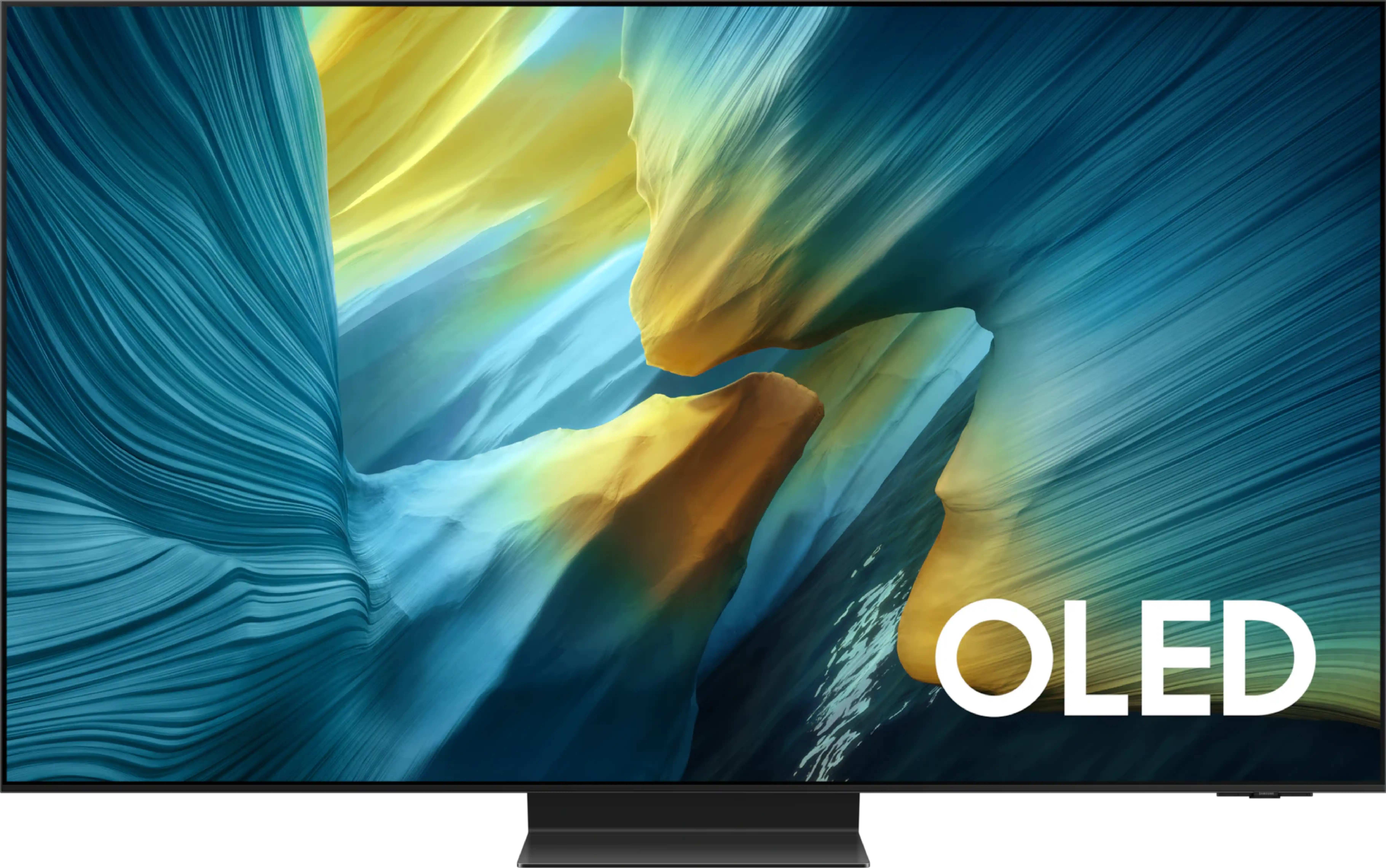
Panel type: LCD VA (wide viewing angle)
Resolution: 3840x2160
System: Google TV
Model year: 2024
Complete the survey to find out the result

Panel type: QD-OLED
Resolution: 3840x2160
System: Tizen
Model year: 2025
Complete the survey to find out the result

Overall rating
8.9
8.8
Movies and series in UHD quality
8.4
9.3
Classic TV, YouTube
8.4
9.3
Sports broadcasts (TV and apps)
8.5
9.1
Gaming on console
9.2
10.0
TV as a computer monitor
7.6
8.8
Watching in bright light
9.5
7.1
Utility functions
9.4
7.9
Apps
9.6
8.7
Sound quality
9.4
8.0
Complete the survey to find out what fits your preferences
Advantages
Amazing HDR material brightness results
Very good colour reproduction after calibration
Advanced motion smoothing system
Noticeable positive impact of the image processor
Faithfulness to the source material
Versatile GoogleTV operating system
Good (for a VA panel) viewing angles
Perfect black and outstanding contrast
High brightness of the image
Amazing image quality after calibration
Ultra-fast QD-OLED 165 Hz panel
Best choice for gamers – full support for HDMI 2.1, VRR, ALLM, and HGiG, with input lag of just 5 ms (highest rating on the portal!)
Best reflection suppression thanks to the matte screen finish
Wide viewing angles without loss of quality – top level thanks to the QD-OLED panel
Intuitive and fast Tizen operating system with a rich set of features
Modern and elegant design
One Connect module for easy and aesthetic cable management
Disadvantages
Only 2 HDMI 2.1 ports - including one ARC
No picture-in-picture (PiP) feature
No support for DTS:X (home theatre)
No USB recording from built-in tuners
Cherry black effect in very difficult lighting conditions
Our verdict
Samsung S95F is an excellent continuation and an improvement on last year's S95D model. Thanks to the QD-OLED panel, we receive a picture that captivates from the first minutes of viewing. The blacks are deep and natural, without any traces of backlighting, and the brightness of the new generation panel reaches levels that not long ago seemed beyond the reach of OLEDs. These values are high enough that the S95F can confidently be compared with the best Mini-LED screens – both in terms of HDR effect and in everyday use in strong daylight. After a slight adjustment of settings, the TV can offer reference image quality, creating a cohesive and cinematic experience. However, it is not just a screen for movie lovers, but also one of the absolute favourites for gamers. The 165 Hz panel with rapid response, input lag of just a few milliseconds, a full suite of gaming features – including VRR, ALLM and excellently implemented HGiG – along with four HDMI 2.1 ports make the S95F effortlessly meet the requirements of both next-gen console owners and PC gamers. It offers a range of capabilities that make the S95F one of the best gaming TVs on the market. Samsung has also taken care of practical details. The matte screen coating effectively eliminates reflections, ensuring that even in a bright living room, the picture remains clear and comfortable. The One Connect module organizes the cables, moving all connections to a separate box, which will be appreciated by anyone who likes to regularly juggle connected devices. The design of the TV is slim, elegant and well thought out – it is evident that this is a Super Premium class product that looks great in any interior. Of course, like any equipment, the S95F has its minor compromises, but at this level and completeness, it is easy to forget about them.
This is a TV that combines the best image quality with functionality and user comfort. Undoubtedly, it competes with the strongest rivals, and can confidently be regarded as one of the main contenders for the title of TV of the Year 2025.
TV appearance




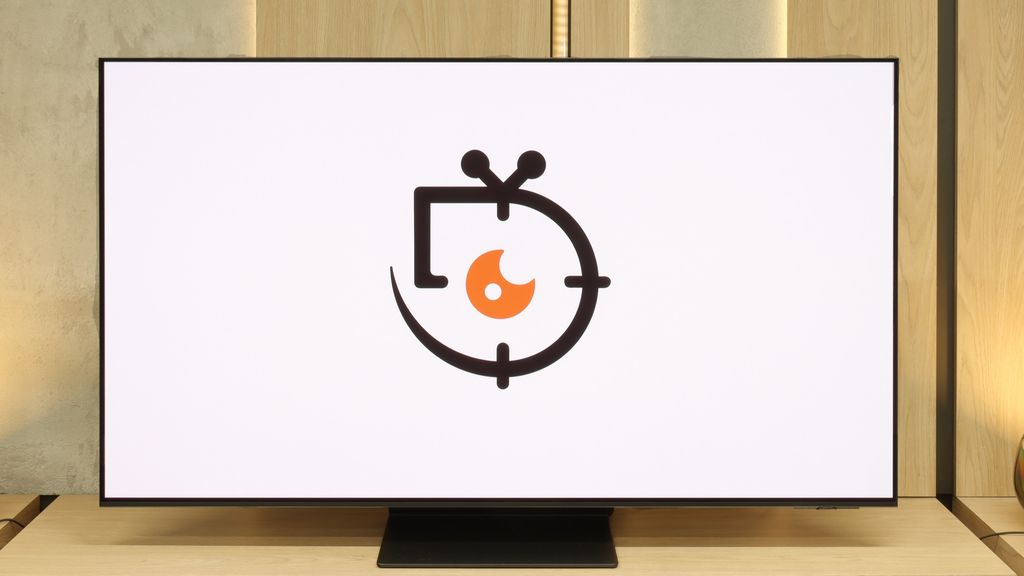
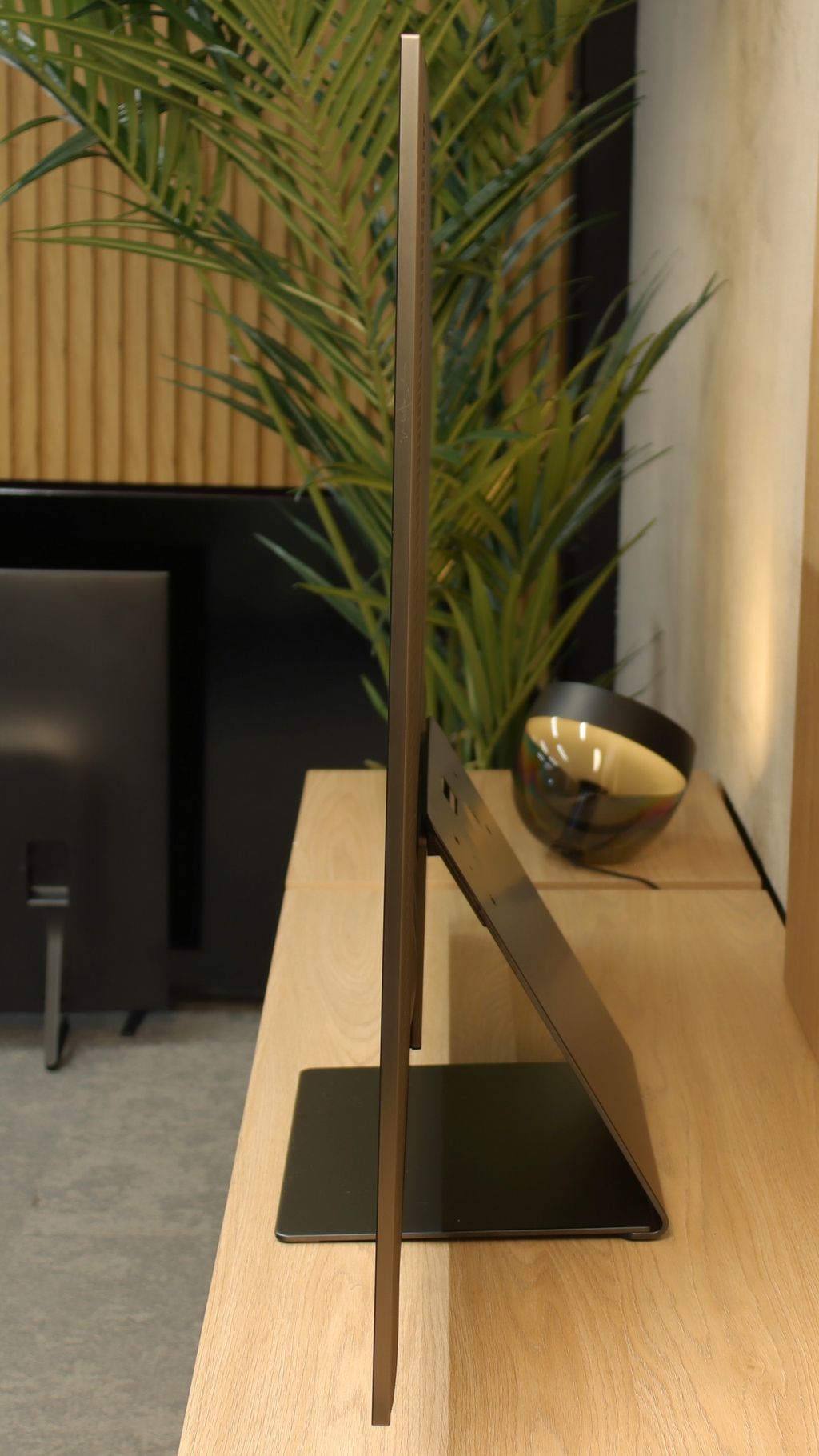
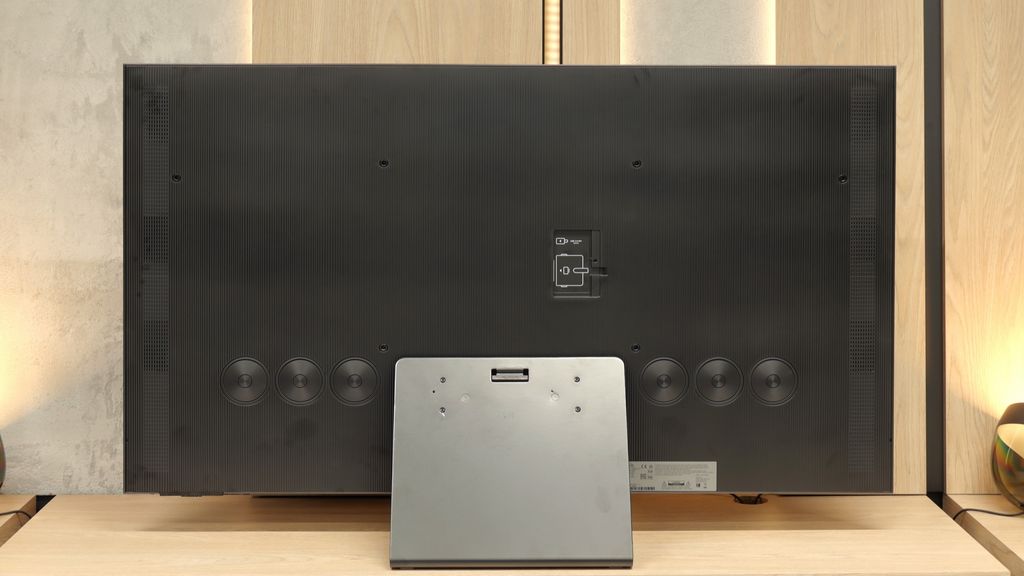
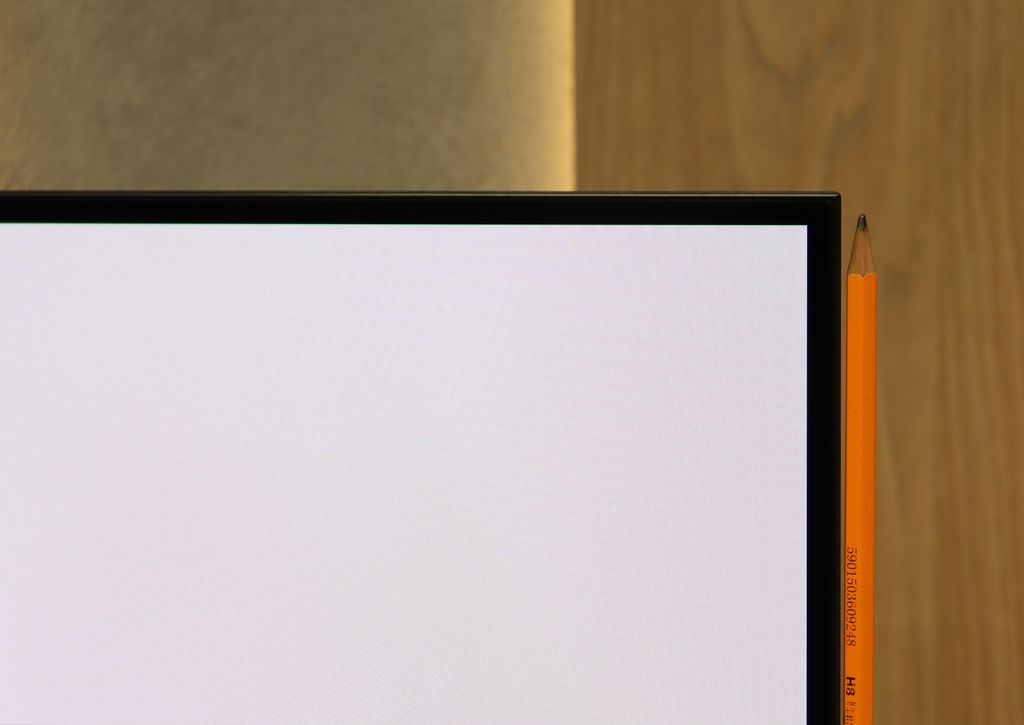
Contrast and black detail
8.6/10
10/10
Local dimming function: Yes, number of zones: 1920 (60 x 32)
Contrast:

Result
184,000:1

Result
98,500:1

Result
120,000:1

Result
9,050:1

Result
5,800:1

Result
∞:1

Result
∞:1

Result
∞:1

Result
∞:1

Result
∞:1
Halo effect and black detail visibility:

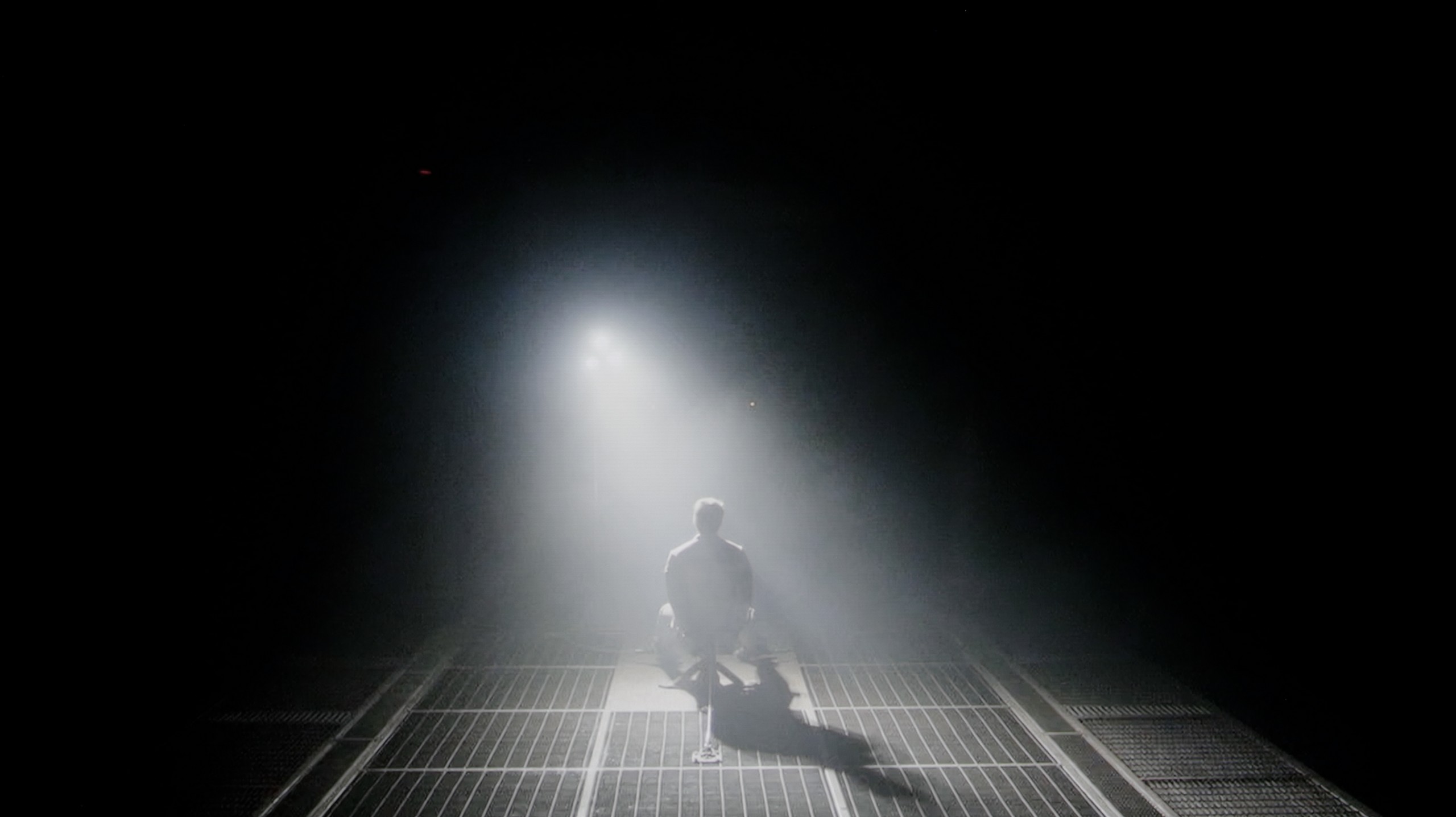
Similarly, the Sony Bravia 9 utilises a high-contrast VA panel, supported by a backlight made up of Mini LED diodes. The total number of zones for the 75" size we tested was 1920. Combining such a number with advanced, and one might boldly say — the best zone dimming algorithms delivers excellent results in contrast and black levels. Practically every scene can display an incredibly deep and immersive image. Of course, the last two won't give us blacks akin to OLED televisions, however, it's fair to say that the results are not weak, as a significant portion of competing TVs will not provide such a faithful representation of the director's vision. Looking below at two test scenes from the Sony Bravia 9 from the film Oblivion and Sicario 2, we can observe very mature behaviour of the backlight algorithms, which ensure that blacks are maintained without sacrificing the original image. Of course, the blooming effect still occurs here due to the operation of the TV's zones (it can be observed on the small lights on the helicopter), but it is definitely one of the best LCD TVs we have had the opportunity to test in terms of black levels and contrast.
The Samsung S95F with a QD-OLED panel shows that when it comes to blacks and contrast, it's hard to find anything better. Even the first test scenes prove that this television can achieve absolute black, while simultaneously delivering the tiniest points of light flawlessly. The effect is stunning – a star-filled sky looks as if it’s been directly transported from an observatory, and the film's darkness takes on depth and drama. Details in the shadows are preserved with reference-level accuracy, making home cinema viewing gain a new dimension.
HDR effect quality
8.6/10
8.7/10
Luminance measurements in HDR:

Result
2199 nit

Result
1700 nit

Result
1717 nit

Result
1751 nit

Result
1741 nit

Result
2044 nit

Result
2159 nit

Result
2167 nit

Result
2180 nit

Result
1427 nit
Scene from the movie “Pan” (about 2800 nits)


Scene from the movie “Billy Lynn” (about 1100 nits)


Static HDR10


Dynamic: Dolby Vision
Dynamic: HDR10+


HDR luminance chart:
SAMSUNG OLED S95F (QD-OLED)
Luminancja HDR
Luminance of RGB colors
Sony Bravia 9 (XR90)
Luminancja HDR
Luminance of RGB colors
The brightness measurement results on the Sony Bravia 9 are phenomenal. Each scene achieves well over 1500 nits, and while watching movies, the TV can sometimes shine even brighter. It goes without saying that such brightness allows for unprecedented experiences and engagement with video material at the highest possible quality. With a high coverage of the DCI-P3 colour gamut, the image is full of colours and, combined with such high luminance, it practically breathes. Thanks to the high peak brightness, viewers can enjoy the full spectrum of colours even in the most difficult scenes, such as those based on dynamic lighting changes. The Bravia 9 supports Dolby Vision and HDR10 formats, which further enhances the viewing experience.
The new generation of QD-OLED panels in Samsung's S95F showcases its full potential, and the brightness results are simply astounding. In test film scenes, such as “Life of Pi” or “Sicario 2”, where smaller light elements appear – stars, the moon, or spotlights – the television managed to achieve over 2000 nits of brightness. This is a result that surpasses even most top Mini-LED models.
The secret lies in the technology itself – instead of a limited number of dimming zones like in Mini-LED televisions, here we have millions of glowing pixels, allowing the television to fully demonstrate its power without technological compromises. Of course, since it is still an organic panel, in scenes that are full-screen and flooded with white – like in the final sequence from The Meg – brightness drops to around 1400 nits. Nevertheless, the result remains excellent and definitely exceeds what any OLEDs, both QD-OLED and WOLED, have offered so far. The colour reproduction is also particularly noteworthy. Thanks to QD-OLED technology, the television achieves almost 100% coverage of the DCI-P3 colour space and around 80% in BT.2020. These values make HDR images not only dazzling in brightness but also stunning in their range of colours.
Factory color reproduction
8.1/10
7.2/10


Factory Mode
After calibration
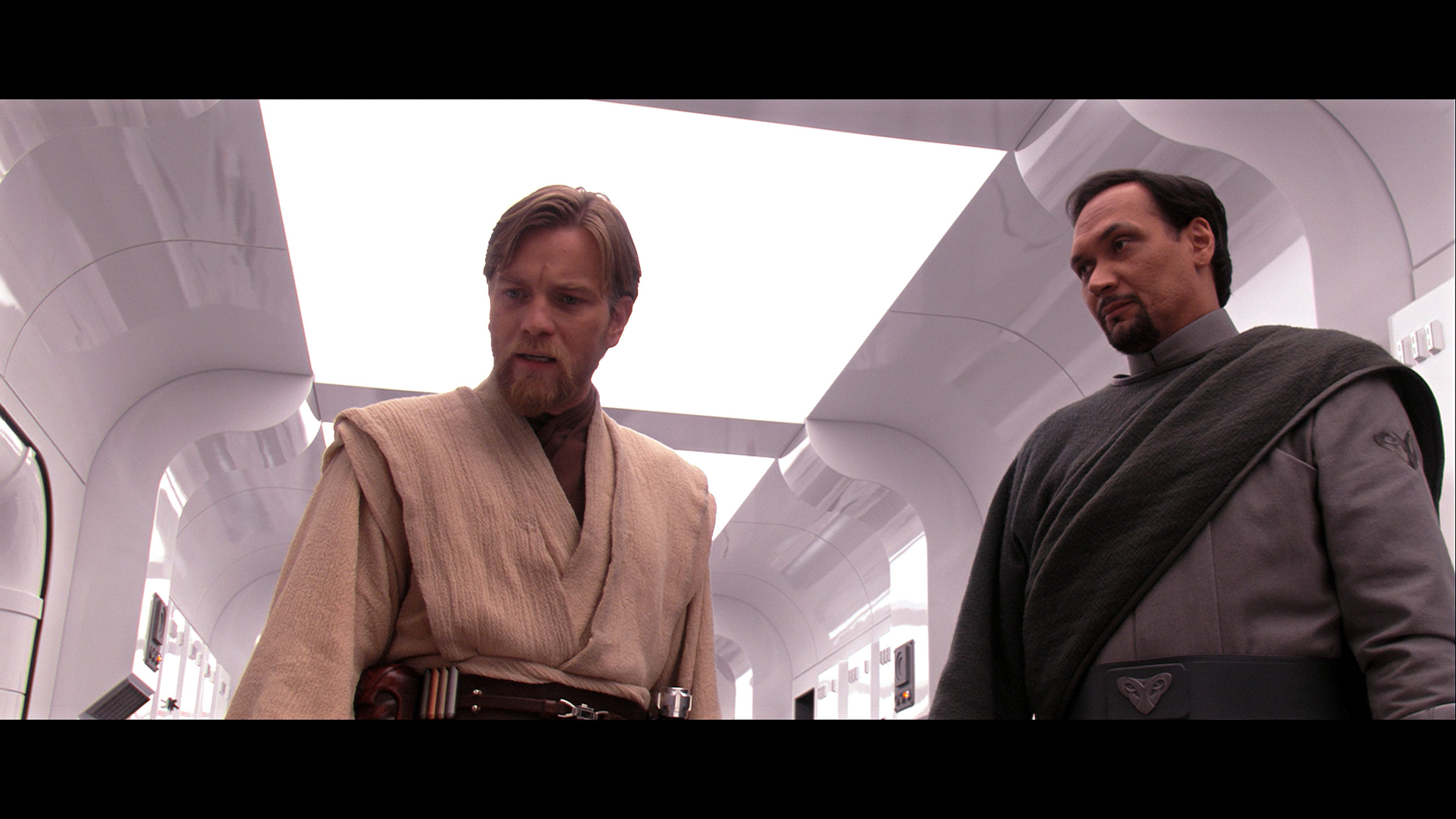
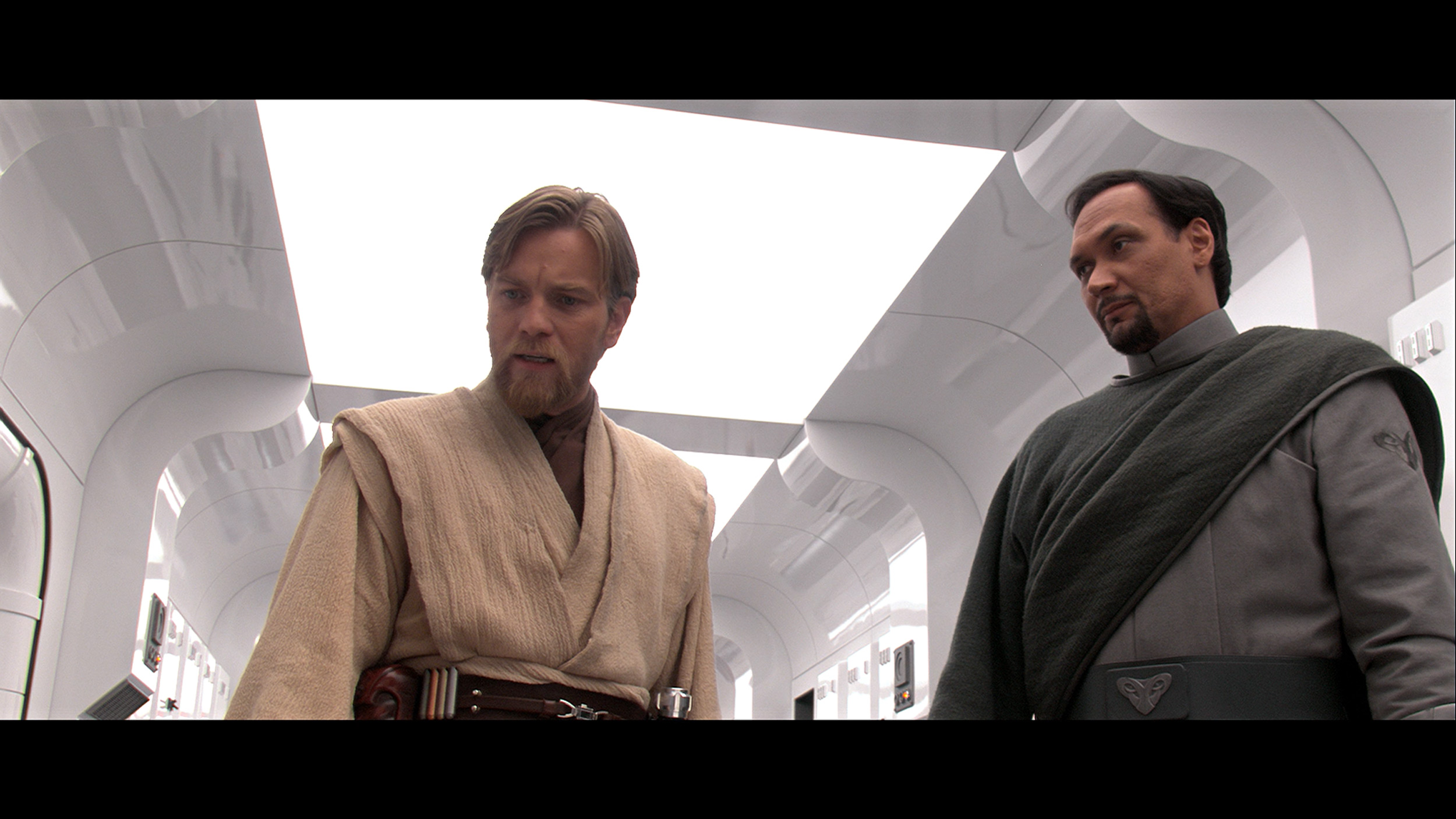
Factory Mode
After calibration
The best factory mode on Sony televisions has remained "IMAX Enhanced" for years. This is what we used throughout the entire testing procedure. Despite being the closest to the reference compared to other predefined options, it has a number of aspects that can be improved to make viewing even more enjoyable. When we look at the gamma in SDR materials, we notice quite a significant boost that is related to over-contrasting the image. It is worth noting that the very beginning of the graph has an even greater spike compared to the reference, which leads to the merging of details in the blacks, creating a uniform blob. The EOTF curve in HDR content looked quite accurate and only showed slight deviations from the reference. However, a common characteristic for both was: a greenish tint in the white balance, issues with greys, and general colour misalignment. The most noticeable issue was related to the uneven distribution of colours in the white balance. Due to the excess of the aforementioned colour, the image was covered with an unpleasant greenish tint.
The best picture mode straight out of the box is undoubtedly Filmmaker Mode – a mode that Samsung has been using for several years and which is intended to faithfully convey the creators' vision. In SDR content, its implementation is not bad, although some imperfections can be noticed. The image is slightly dimmed, and the screen has a subtle pinkish hue resulting from an excess of red and blue in the white balance. Colour errors remained at a level of 3–4 ΔE units – and for the uninitiated: a value above 3 is the threshold where the average human eye starts to notice differences.
Much bigger problems arise in HDR content, however. Here, the white balance was not as much of an issue – a slight excess of blue did not significantly hinder things. The problem became brightness management. In practice, the TV "blows out" the image too much, causing details in the blacks to completely disappear. The final effect was far from what was expected, and the colour errors in this mode became quite significant. It’s hard to say why such a design decision was made, but it was clear that the factory HDR settings do not allow this TV to showcase its full potential.
Color reproduction after calibration
9.3/10
9.4/10

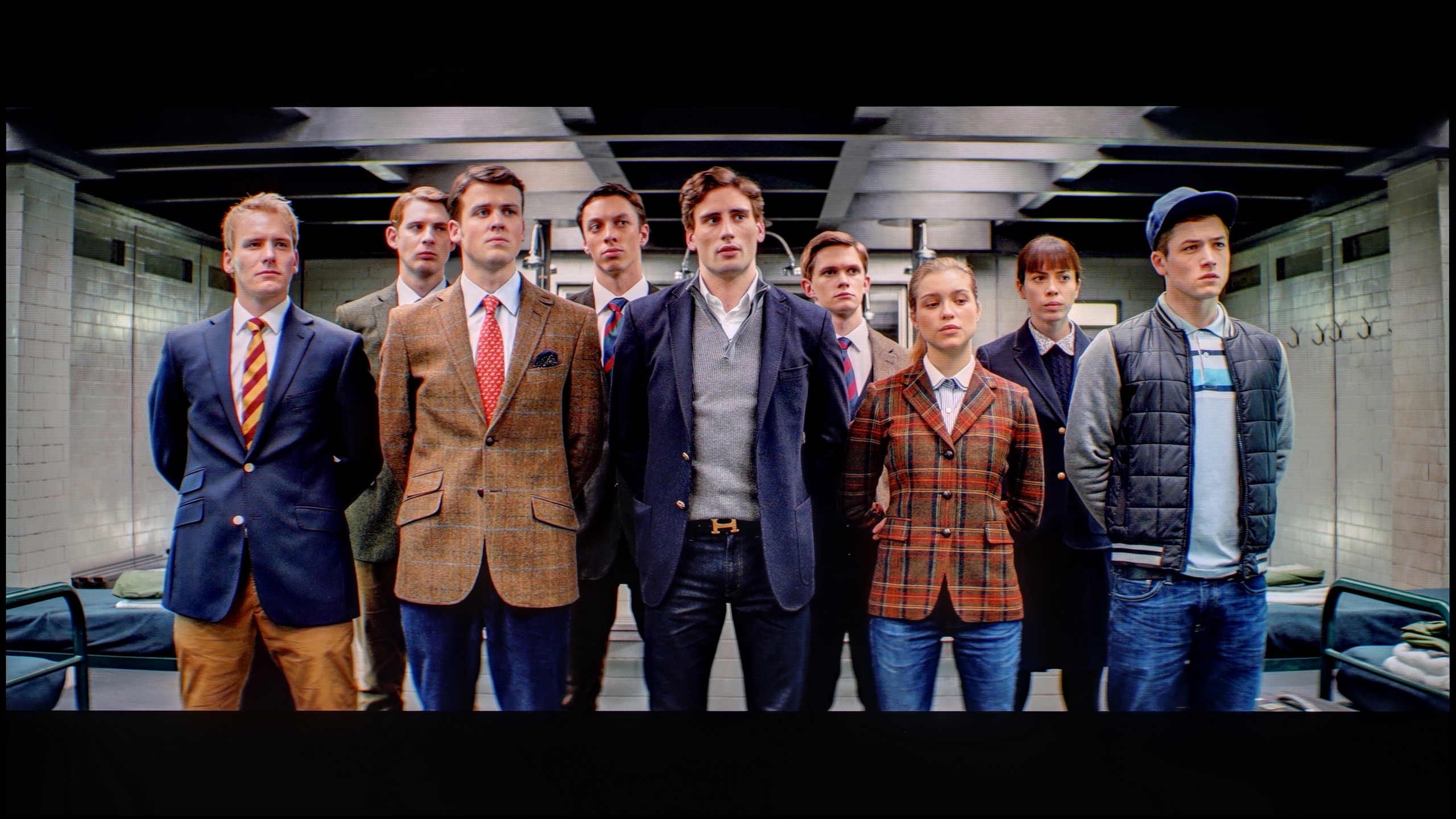

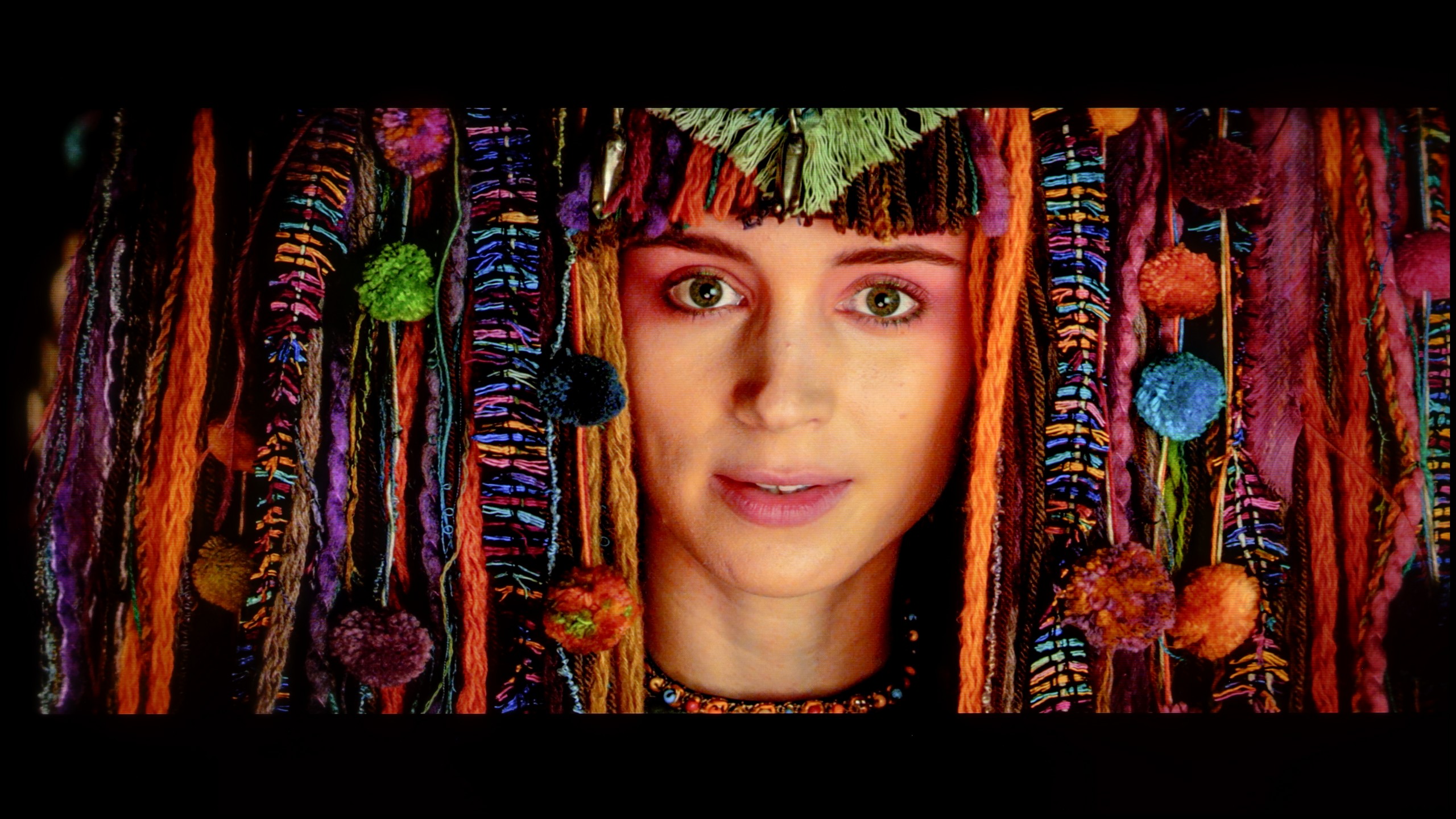
The colour reproduction after the calibration process should be regarded as excellent. Regardless of the signal, whether it's SDR or HDR, we can expect an image incredibly close to what the film director saw. Practically every image flaw has been modelled and maximally improved. This was made possible by the advanced tools used for the calibration process, which Sony has provided in its televisions for years, including 2- and 20-point grey scale adjustment and a very elaborate CMS.
After calibration, it was possible to make subtle adjustments to the white balance and significantly improve the image characteristics. In SDR content, the quality has become practically reference-level – most colour errors have dropped below a ΔE value of 1, which is the level at which the human eye can no longer perceive differences. This is a result that places the S95F among the absolute top TV models available on the market.
In HDR material, calibration also brought a significant improvement. The tendency of the TV to blow out the image was managed, as confirmed by the analysis of the EOTF curve. There is still a slight tendency to brighten the entire scene or occasional loss of detail in the blacks, but this does not significantly affect the overall perception. After calibration, the S95F shows its full potential and can be regarded as one of the best TVs on the market!
Smoothness of tonal transitions
7.1/10
8.9/10





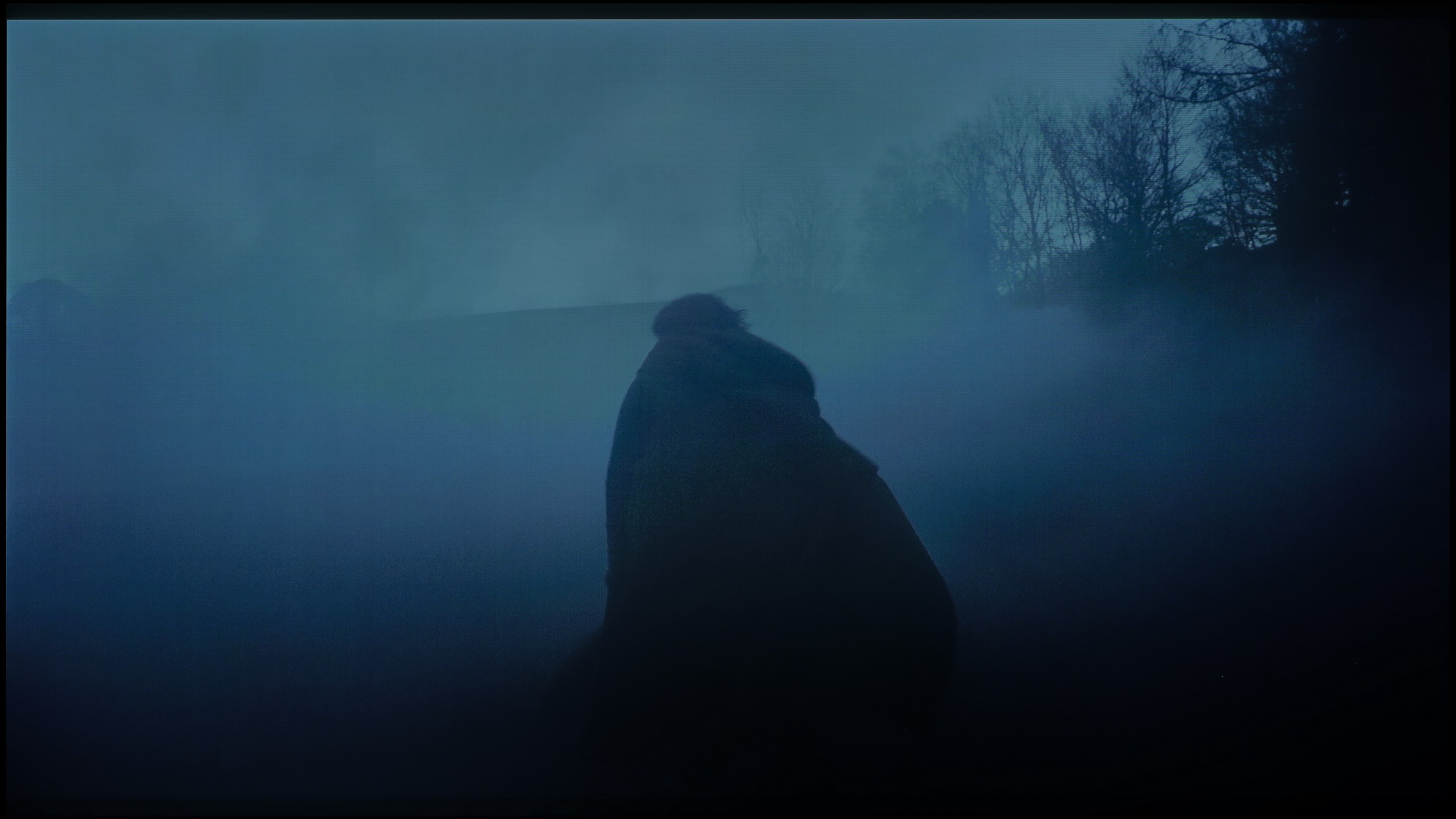

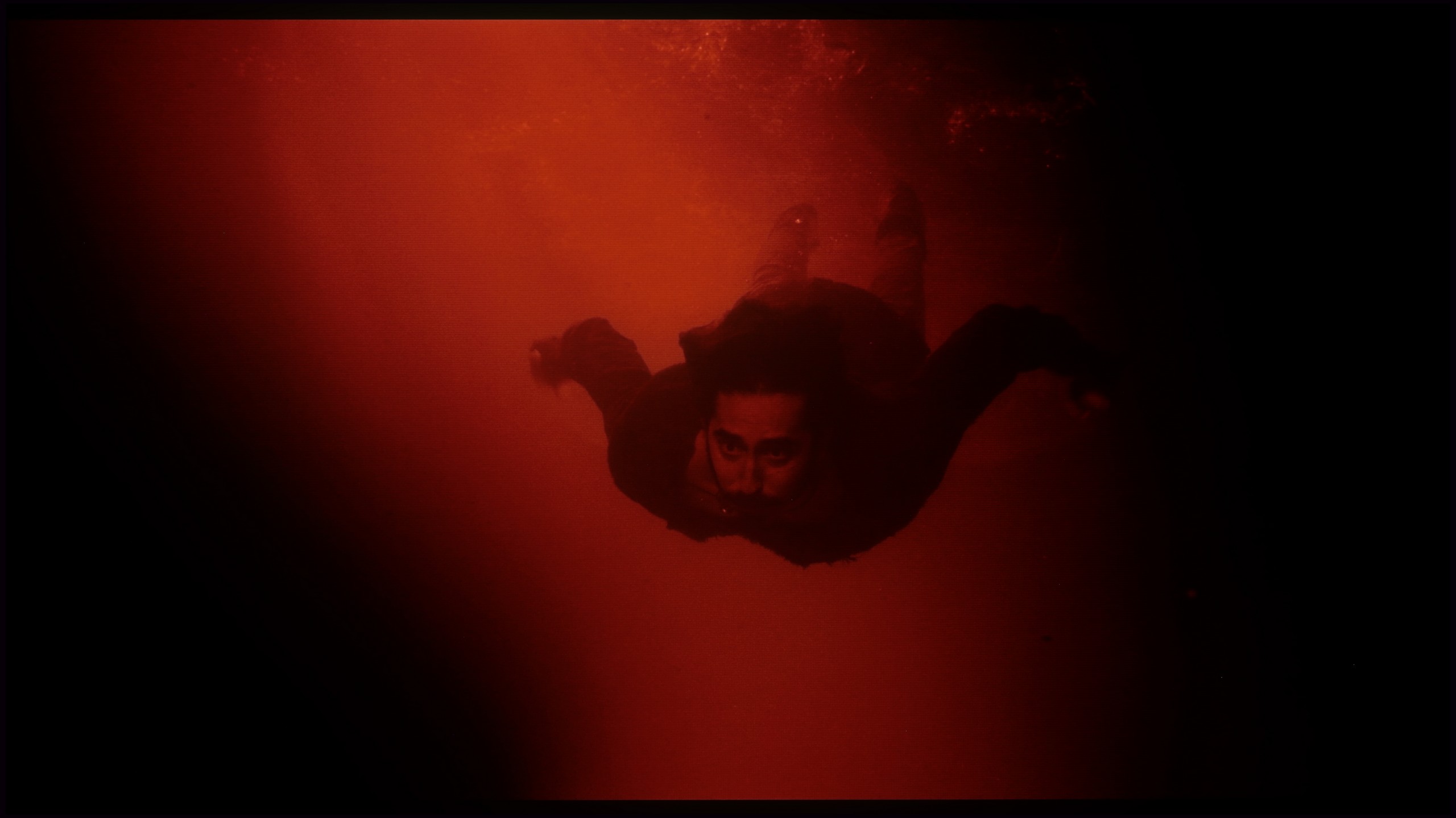




The default quality of gentle gradation, i.e. without the enhancement feature activated, is fairly average, considering the price range and class of the device. The issue isn't noticeable with very bright backgrounds, but it's quite prominent on dark ones. This is perfectly illustrated by the last two test scenes, where tonal transitions are apparent and may cause discomfort to image purists.
The Samsung S95F with a QD-OLED panel handles tonal transitions really well. It's hard to find any serious issues here – the colour gradation is smooth, and the image looks natural. Only in very dark scenes and shades close to black can you notice some slight imperfections, but they don't matter much during everyday viewing. The overall impression is that the fluidity of transitions is at a very high level and doesn't distract the viewer's attention.
Image scaling and smoothness of tonal transitions
8.5/10
7.5/10
Smooth transition function

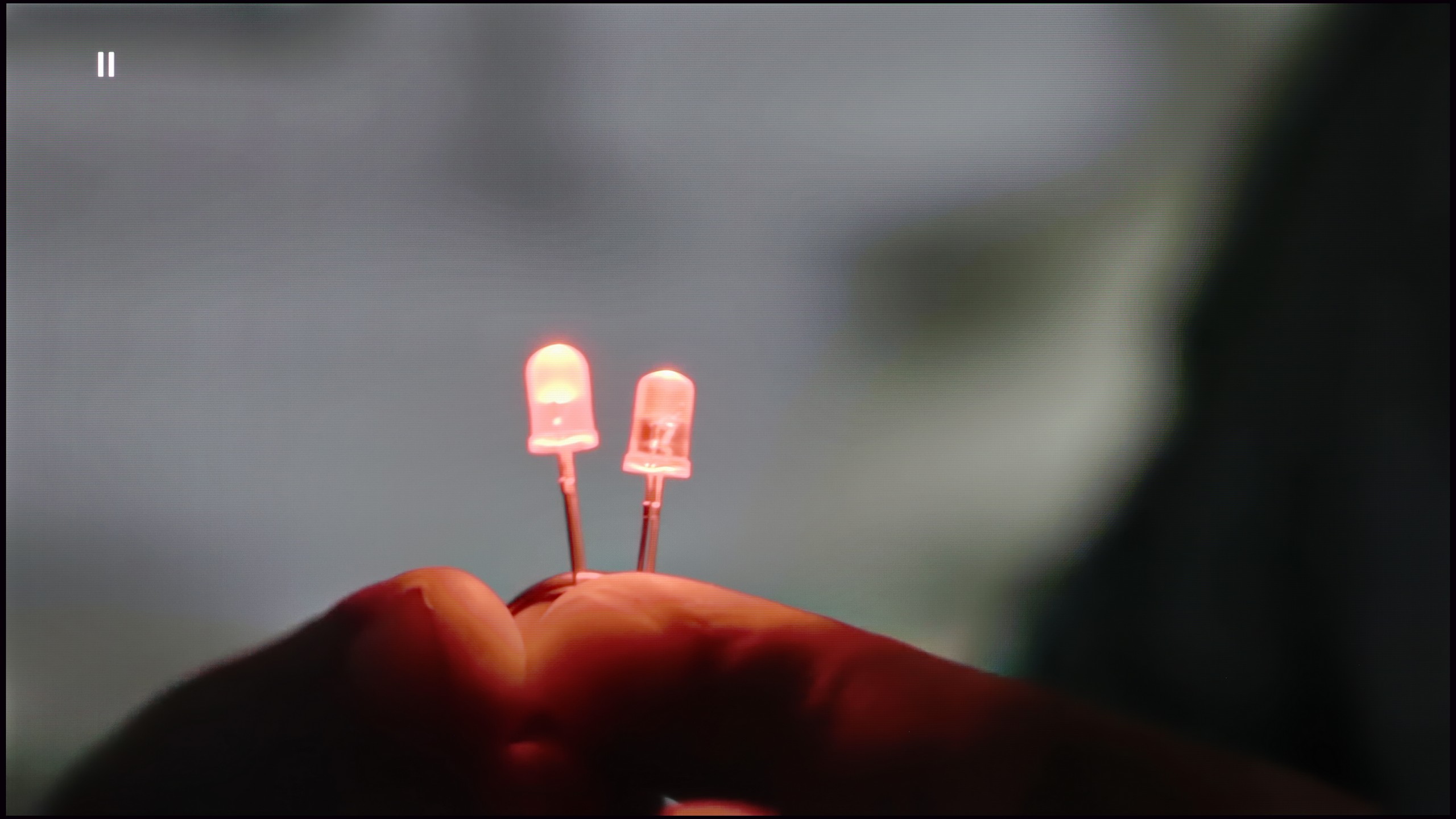
Image without overscan on the SD signal


Let's take another look at the quality of tonal transitions, but this time we will analyse the quality of image scaling, which will be crucial when watching lower quality materials. We'll start with the function responsible for the quality of tonal transitions. While they are quite average by default, after activating the option, even at the smallest degree, we can confidently say that these are some of the better ones we've seen. You can confidently enable this function, as it does not cause any negative phenomena, such as grain blur.
Sony has been boasting for several years that its "XR" processor is unmatched when it comes to image scaling. And it's not hard for us to believe that, because the image is indeed incredibly sharp, yet very natural.
Samsung S95F offers a noise reduction feature that smooths tonal transitions. It works very effectively, but in practice, it can be too aggressive. Materials of lower quality – e.g. older recordings or videos from YouTube – become soft and plastic when it is enabled, resembling an image digitally smoothed in graphic software. Unfortunately, the natural film grain, which often adds authenticity to the image, disappears in the process. Fortunately, the television does not lose too much fine detail, e.g. in skin textures or environmental elements. Therefore, this feature is best used judiciously – depending on preferences, one can achieve a smooth but less natural image or one that is truer to the original. In our opinion, the most universal choice is the “Standard” setting.
Image scaling performs significantly better. The television handles lower resolution materials well – even 576p content looks quite decent, though slight blockiness can be observed. Overall, the effect is very good, although it slightly trails behind what Sony Bravia 8 (II) or LG G5 can achieve. It’s also worth mentioning a small imperfection of the S95F – in older materials, overscan may occur, causing a slight trimming of the left edge of the image.
Blur and motion smoothness
8.5/10
9/10

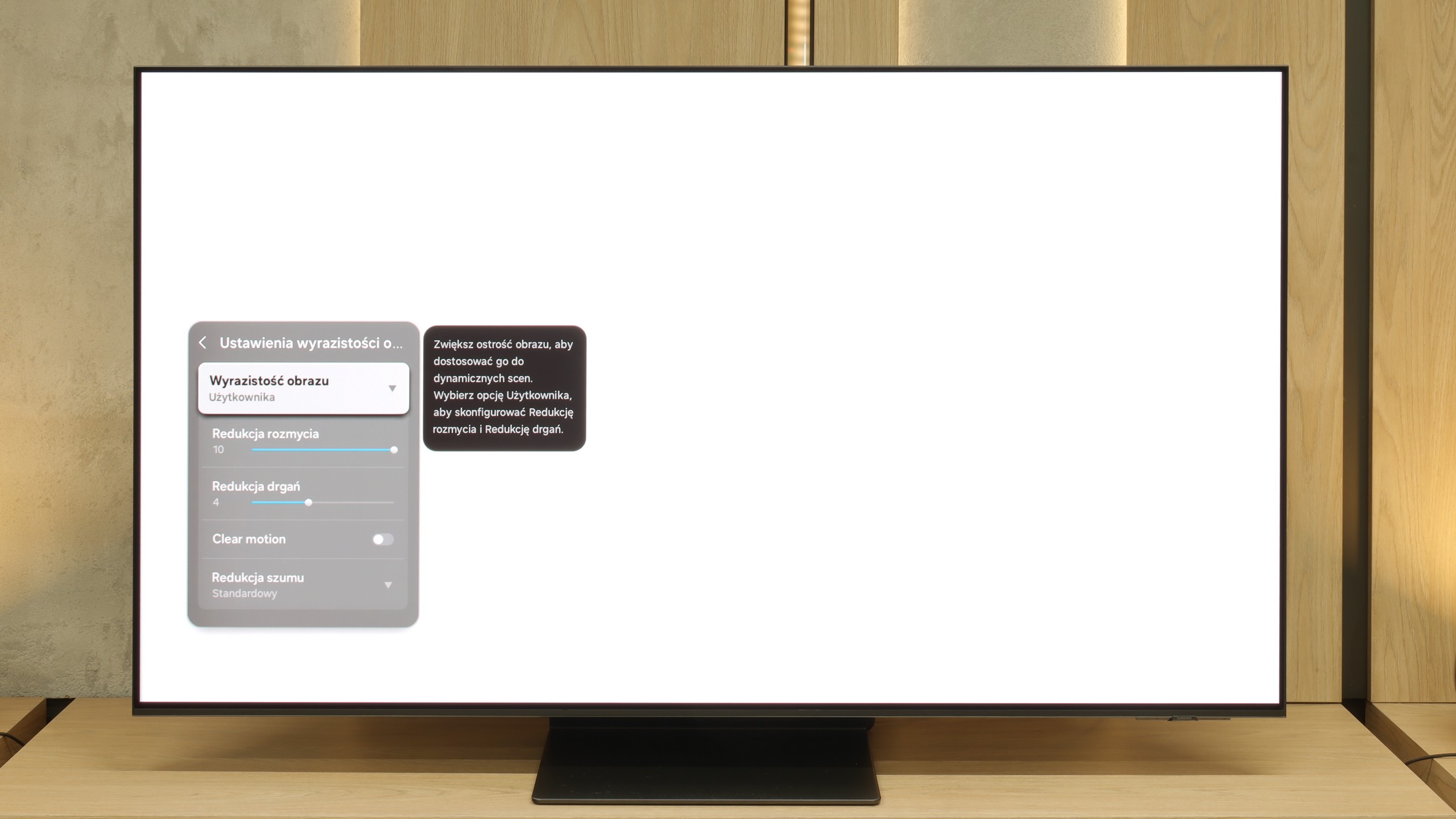
Blur (native resolution, maximum refresh rate):



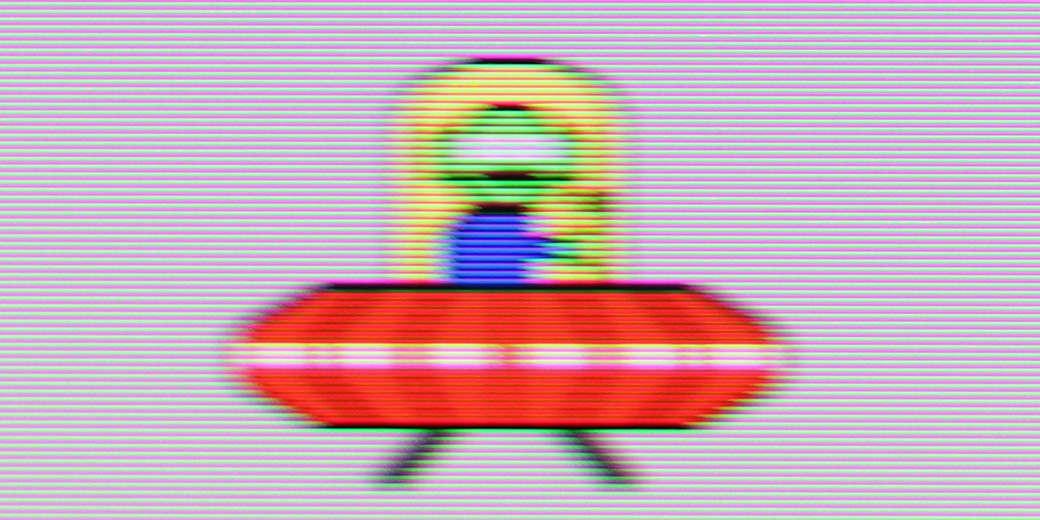
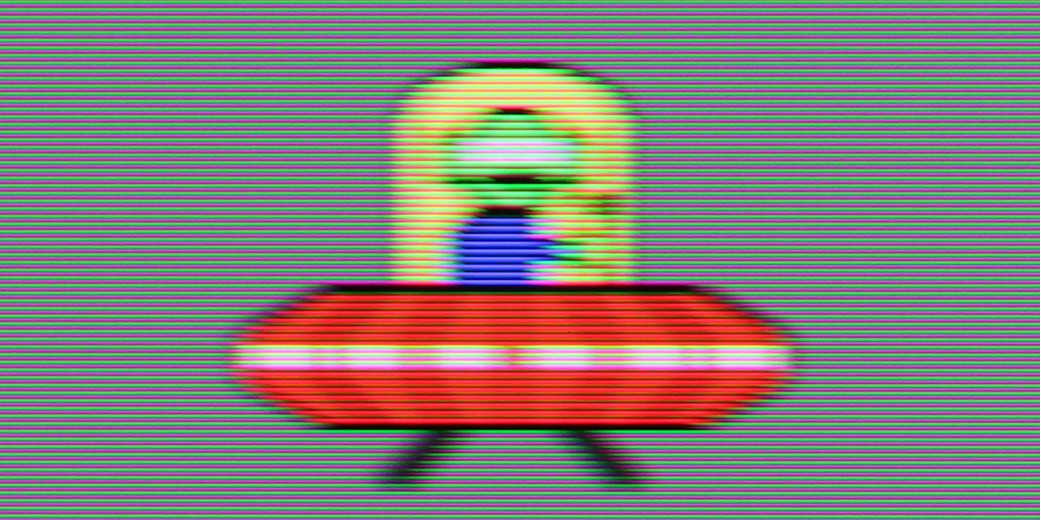
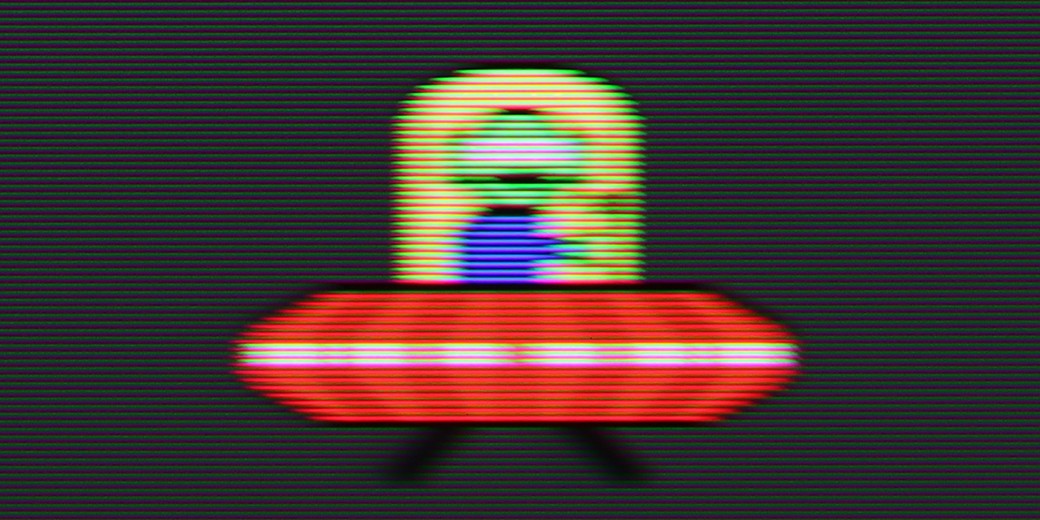
Blur (BFI function enabled):



Image flickers in this mode
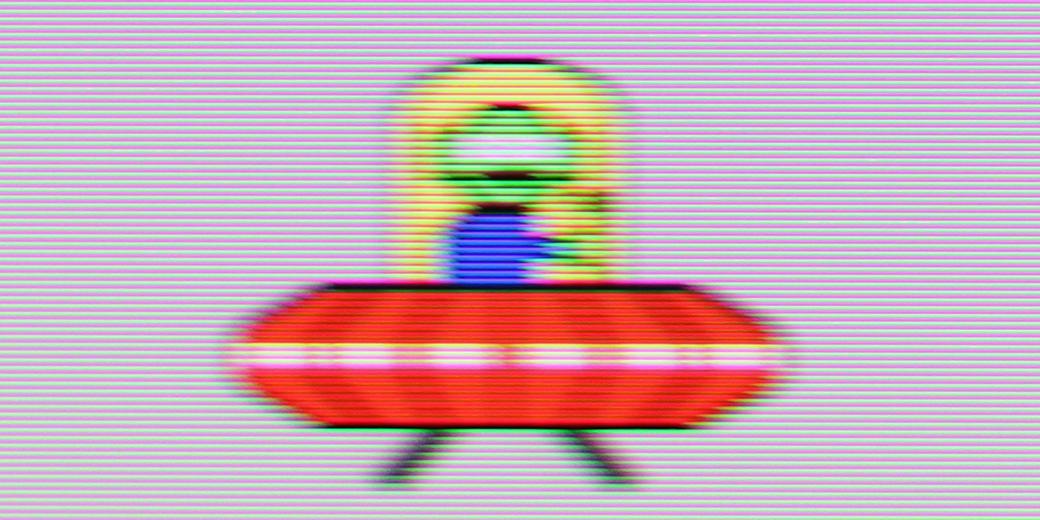
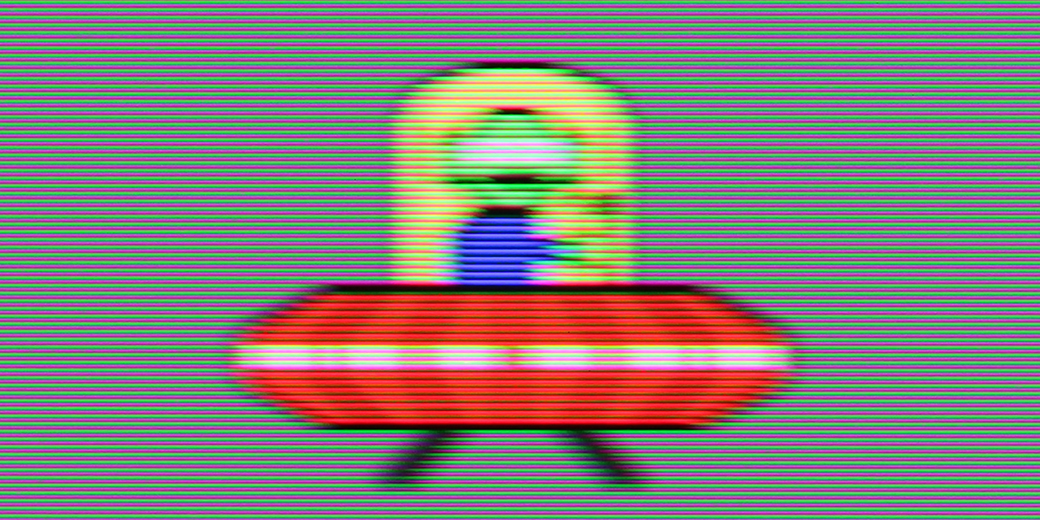
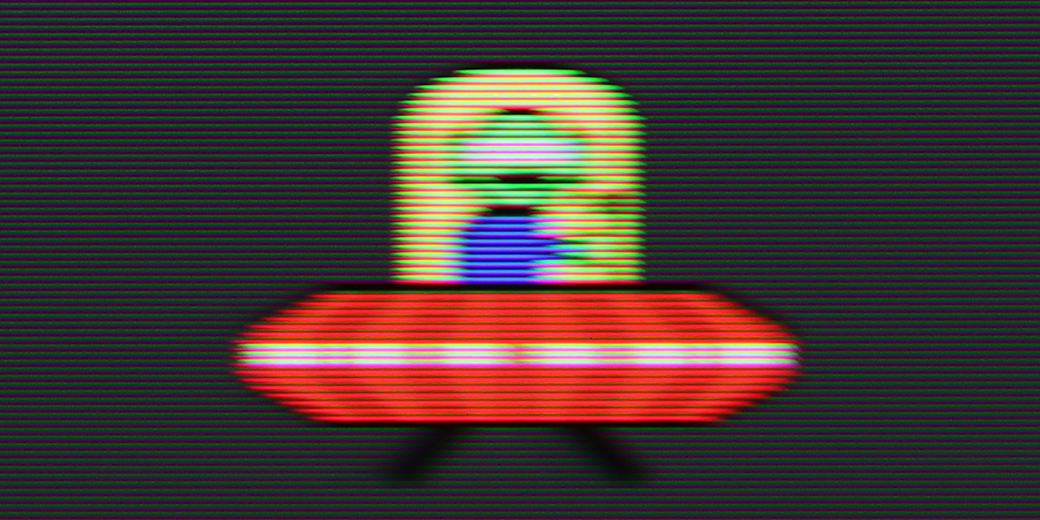
Smużenie ():
Smużenie (4K@165Hz):

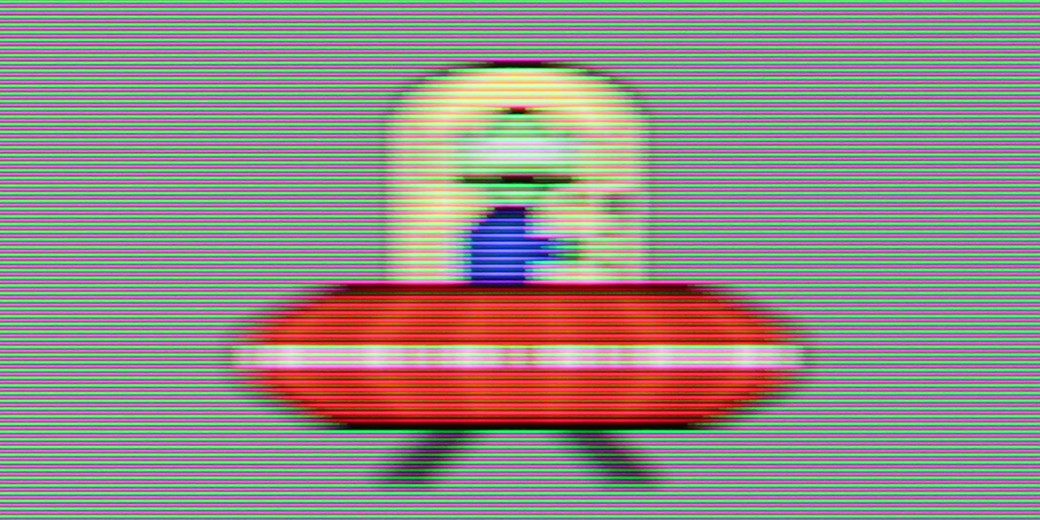
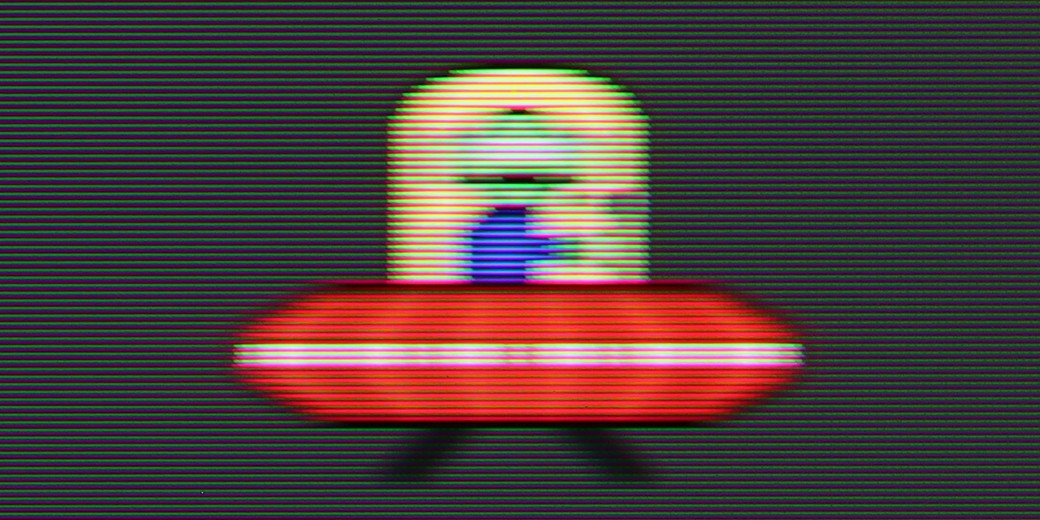
The maximum refresh rate of the Sony Bravia 9 is 120 Hz. This is the essential minimum for watching primarily sports or content that has a lot of movement dynamics while maintaining a sharp and smooth image. For demanding users, the manufacturer has implemented a very advanced smoothing system, which is divided into three segments: Smoothness (Film), Smoothness (Camera), and Clarity. The first two correspond to: blur degree and smoothing degree, respectively. The third option will be described in more detail below. Additionally, we can adjust all settings to various levels, each of which will have an effect, ensuring that we can find our very own sweet spot. In the photo, we present a setting with slight smoothing, without the soap opera effect.
The Samsung S95F excels in motion fluidity, presenting phenomenal performance. The panel operates at a native resolution of 4K with a refresh rate of up to 165 Hz, and when combined with QD-OLED organic technology, it delivers incredible results. Sports and games look sensational – the picture is fast, dynamic, and very natural. Additionally, the built-in motion smoother and blur reduction system allow you to customise the character of the image to your own preferences. You can opt for a more 'framey' effect with visible film texture or a smooth, cinematic spectacle. Every viewer will find a setting that suits them.
Console compatibility and gaming features
9.4/10
9.6/10
- ALLM
- VRR
- VRR range48 - 120Hz48 - 165Hz
- Dolby Vision Game Mode
- Correct implementation of HGIG
- 1080p@120Hz
- 1440p@120Hz
- 4K@120Hz
- Game bar

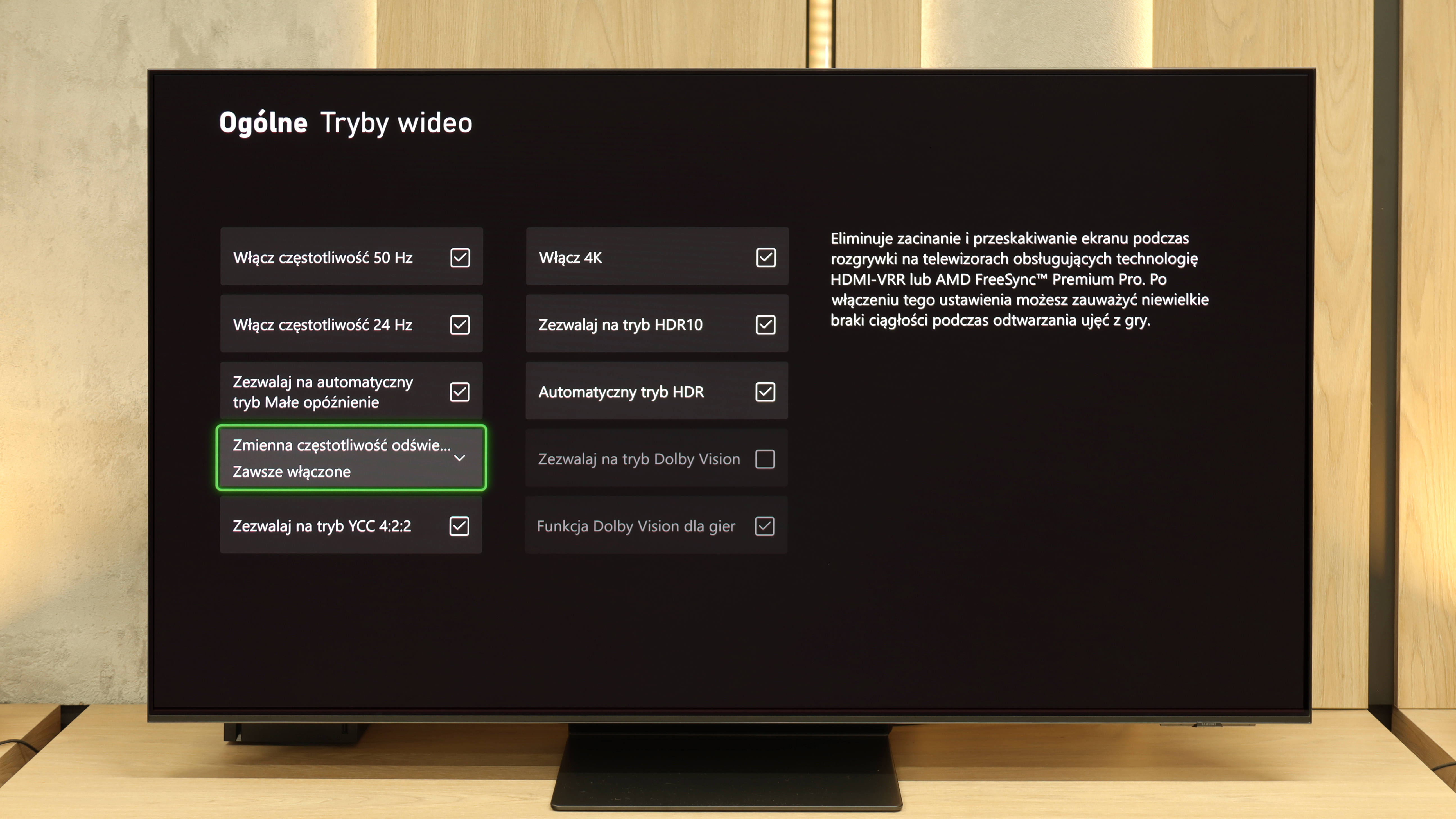

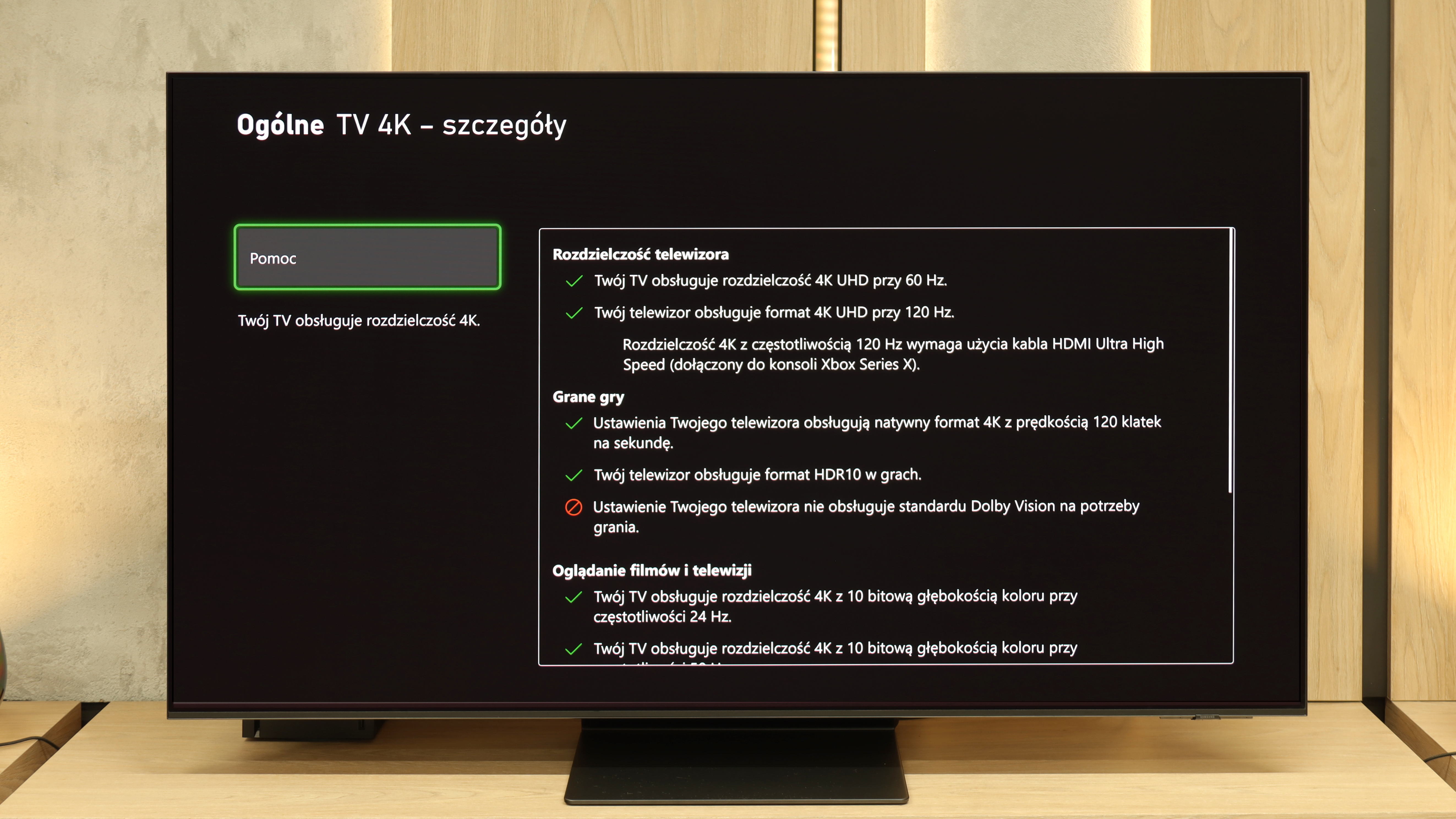

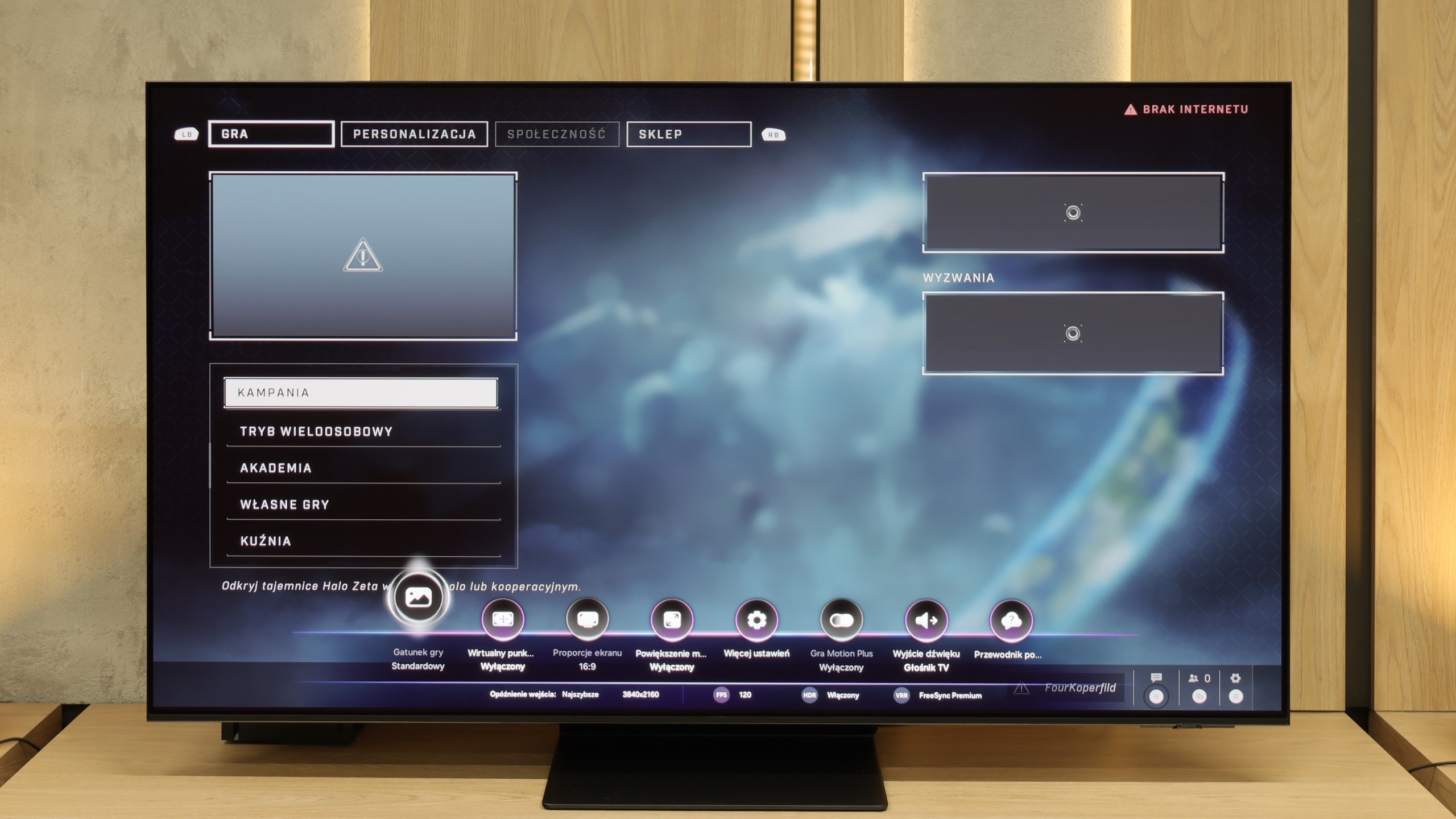

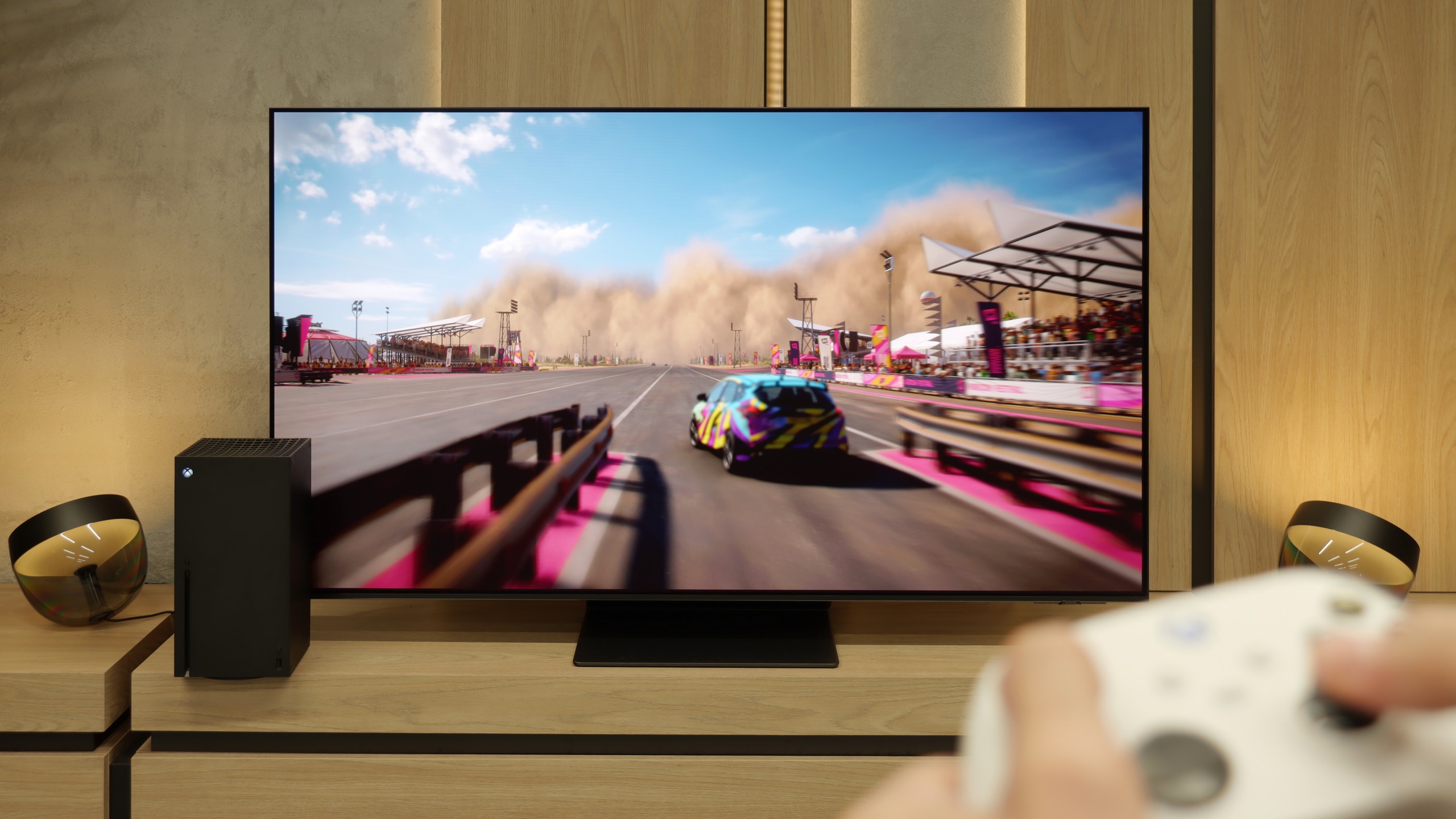
The Sony Bravia 9 television is equipped with four HDMI ports. However, somewhat incomprehensibly for this class of device, only two of them operate in the 2.1 standard. Nevertheless, it shouldn't be taken away that almost all features work excellently and do not cause any negative feelings upon being activated. Games operating in either HDR10 or Dolby Vision have a very short input lag, allowing for a very comfortable session with the title. A consolation remains in the good implementation of the HGIG mode, which after proper tuning does not deviate significantly from Dolby Vision.
A year ago, Sony added to its televisions what has been standard for some manufacturers for years. This is, of course, the GameBar, allowing for quick adjustment of settings without the need to exit the game. The implementation of this feature was successful and works very smoothly. We have been provided with conveniences such as: crosshair grid, black level correction, and the ability to reduce the screen to the proportions of gaming monitors.
Sony Bravia 9 will certainly find its group of fans, most likely among PlayStation enthusiasts. Here, we must admit that this will be the most sensible choice, as in practice both the console and the television have exactly the same capabilities. However, looking more broadly, aside from issues with Dolby Vision in games, one cannot deny that the Bravia 9 is a very good television in the context of gaming.
The same advantages of low motion blur and excellent motion fluidity characteristic of OLED panels are just the beginning, as the Samsung S95F has been designed with gamers in mind. The manufacturer has equipped it with four HDMI 2.1 ports – though limited to a bandwidth of 40 Gb/s, in practice, this has no impact on compatibility with consoles or PCs. We get a full package of gaming features: variable refresh rate (VRR), automatic game mode (ALLM), as well as a very well-implemented HGiG standard, ensuring that HDR titles look as the creators intended. This is complemented by Game Bar – a clear settings hub, where with one motion, we can preview and change all key image parameters. The proprietary motion smoother Game Motion Plus also deserves praise, as it can smooth out animation, which is especially useful in productions running at 60 frames, where stability is not always exemplary. While there is no support for Dolby Vision in games, it’s hard to consider this a serious drawback – Samsung compensates with other solutions. This is one of the best, if not the best, gaming TVs available on the market today.
Input lag
9.7/10
10/10
SDR
HDR
Dolby Vision
Input lag for Bravia 9 is low in every scenario. Even the most dedicated gamers will certainly appreciate the very low input lag of 10 ms at demanding 4K 120 Hz with HDR settings.
The input lag on the S95F is at a level where it’s hard to even talk about lag. 5 ms at 120 Hz content means there’s no space for hesitation between pressing a button and the response on the screen. It’s pure immediacy. And if someone’s worried about the 60 Hz mode – don’t stress, there we’re talking about 10 ms, which is still a figure that places the TV in the absolute top tier and gives no reason for complaints.
Compatibility with PC
7.6/10
8.8/10

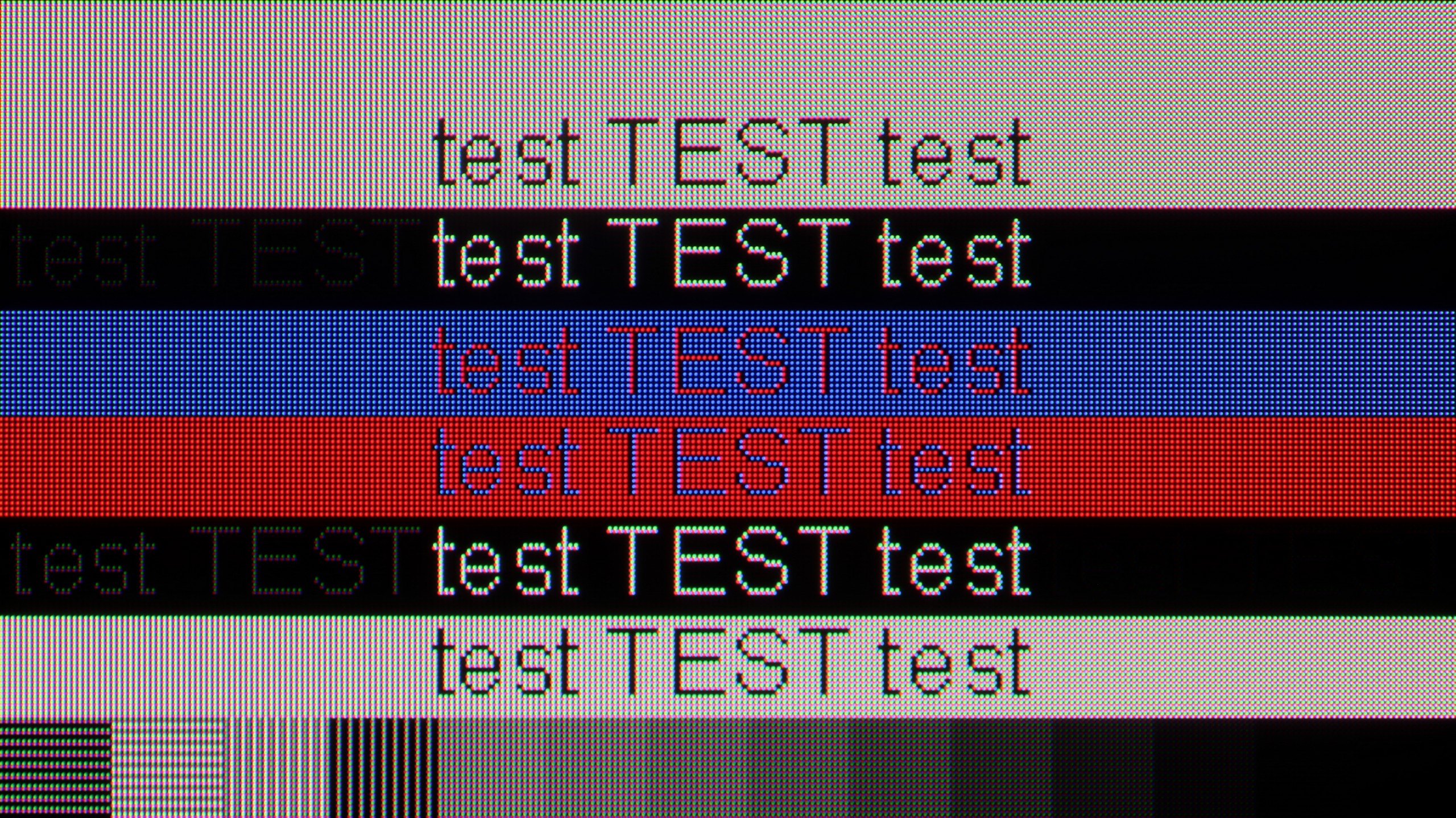
Sony Bravia 9 coupled with a PC performs excellently, thanks to its very low latency of just 9 ms, providing immediate response between the mouse, eye, and screen. An extremely important aspect while working on the screen is the readability of text, which in the case of the tested television is very good. However, it is essential to remember to switch the television to "Game" mode, as this provides the best text readability, while in other scenarios, the font may become unreadable.
The subpixel arrangement is BGR, which does not negatively impact using the television as a monitor. However, since operating systems are not adjusted for such a subpixel format, this may result in slightly less sharp contours. This is practically negligible, and only a handful of people may notice it.
S95F with a QD-OLED panel is a true magnet for PC gamers. The 165 Hz refresh rate combined with virtually negligible input lag and full support for G-Sync and FreeSync means the TV functions like a top-tier monitor. Dynamic action games, shooters, and racing games gain fluidity and responsiveness that are hard to find in competing models. When working with text, you may notice a subtle rainbow halo around letters, characteristic of the sub-pixel layout of QD-OLED, but thanks to proper handling of chroma 4:4:4, everything remains readable and does not interfere with everyday use.
Viewing angles
7.4/10
9.8/10
Thanks to the use of an angular coating, colour degradation and contrast loss at an angle are not as drastic as in the vast majority of VA matrix televisions. Only after a significant shift off-axis does greater image destabilisation become apparent; however, the overall experience can be rated very positively.
Samsung S95F with a QD-OLED panel currently offers some of the best viewing angles on the market. Whether we're sitting directly in front or off to the side of the couch, the picture remains consistent – colours don't lose their intensity, and contrast doesn't degrade. It's a screen that's hard to find a weak point in this category.
TV efficiency during daytime
9.5/10
7.1/10

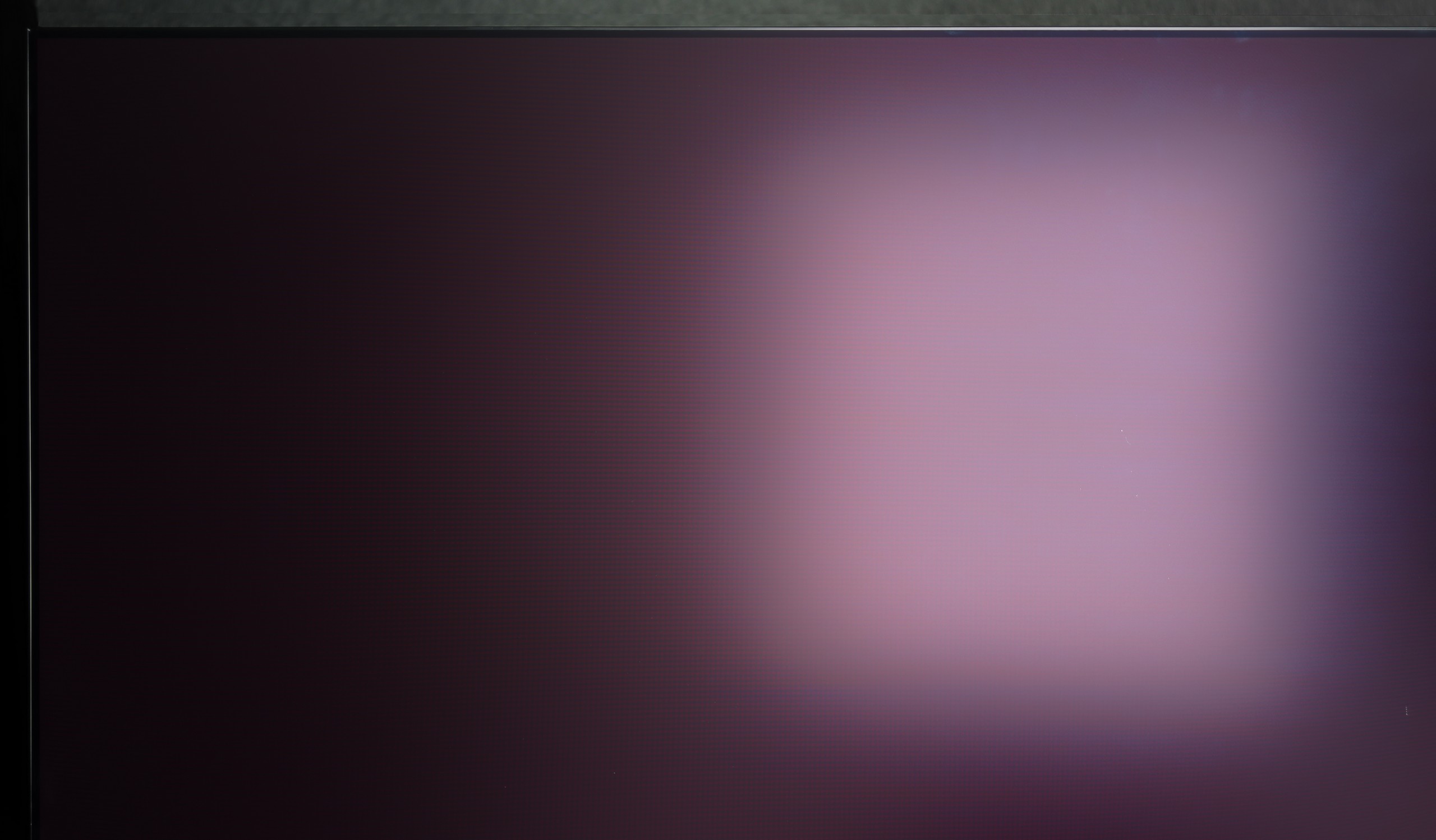

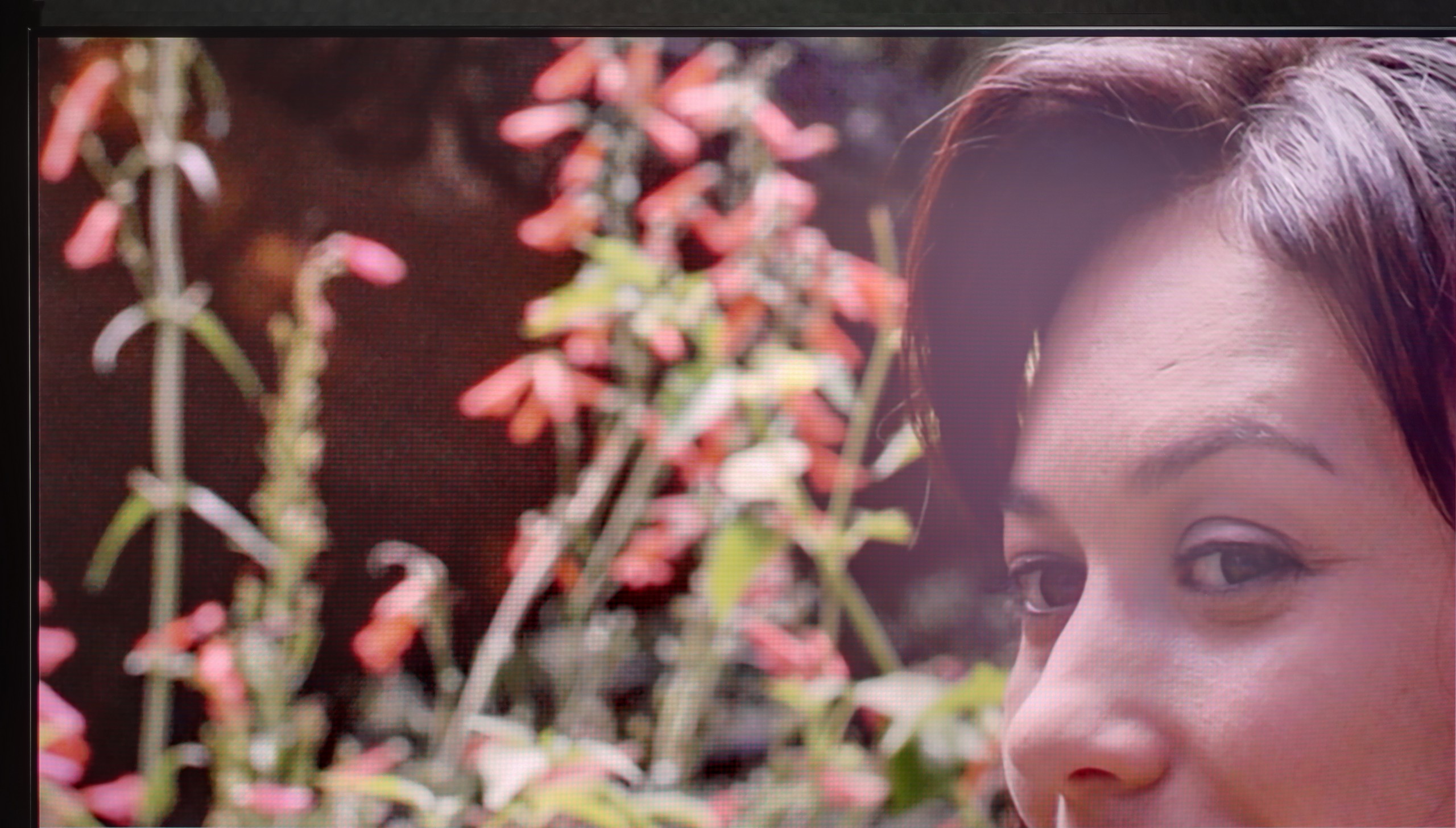
Matrix brightness
Average luminance SDR
SAMSUNG OLED S95F (QD-OLED): 671 cd/m2
Sony Bravia 9 (XR90): 1609 cd/m2
When watching during the day, we can count on an incredibly high brightness of 1600 nits, which allows for very comfortable viewing even when harsh angled light hits the TV. Even reflections that spill across the screen do not detract from the enjoyment of watching on a sunny day. For this reason, the Sony Bravia receives nearly the highest rating from us in this regard.
One of the biggest distinguishing features of the Samsung S95F compared to its competitors is the matte screen coating. This solution performs best on the market in terms of reducing reflections and glare – the image remains clear even in a brightly lit living room. However, it’s important to keep in mind that the characteristics of the QD-OLED panel come with a certain compromise. Under intense lighting, black can brighten, taking on a cherry black hue, which affects color saturation. On the other hand, the brightness of the panel, reaching around 700 nits in SDR mode, is fully sufficient for the TV to perform flawlessly in typical daylight conditions.
Details about the matrix
Subpixel Structure:

Panel uniformity:

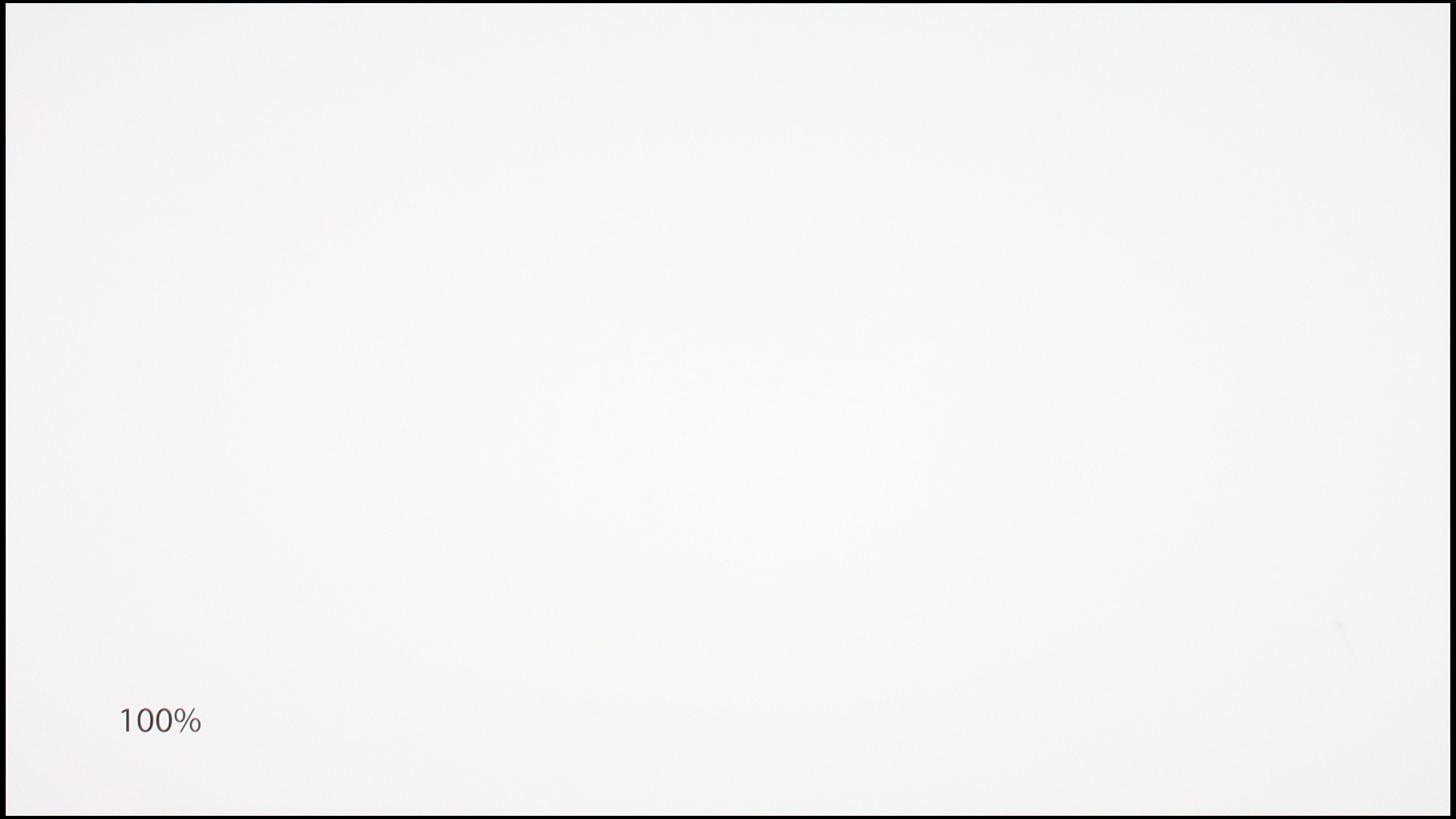
Sony Bravia 9 (XR90)
SAMSUNG OLED S95F (QD-OLED)
TV features
9.4/10
7.9/10
- HDMI inputs2 x HDMI 2.0, 2 x HDMI 2.1 48Gbps0 x HDMI 2.0, 4 x HDMI 2.1 40Gbps
- OutputsToslink (Optical audio), eARC (HDMI), ARC (HDMI)Toslink (Optical audio), eARC (HDMI), ARC (HDMI)
- Network InterfacesWi-Fi 2.4GHz, Wi-Fi 5GHz, Ethernet (LAN) 100MbpsWi-Fi 2.4GHz, Wi-Fi 5GHz, Ethernet (LAN) 100Mbps
- TV receptionDVB-T, DVB-T2, DVB-S, DVB-S2, DVB-CDVB-T, DVB-T2, DVB-S, DVB-S2, DVB-C
Classic features:
- Recording to USB (terrestrial TV)
- Recording programming
- Picture in Picture (PiP)
- RF remote control (no need to aim at the screen)
- Backlit remote control
- Teletext
- Audio only mode
- Possibility to connect Bluetooth headphones to the TV
- Possibility to simultaneously use Bluetooth headphones and the TV speaker
Smart features:
- AirPlay
- Screen mirroring (Windows Miracast)
- Wyszukiwanie głosowe
- Voice search in native language
- Ability to connect a keyboard and mouse


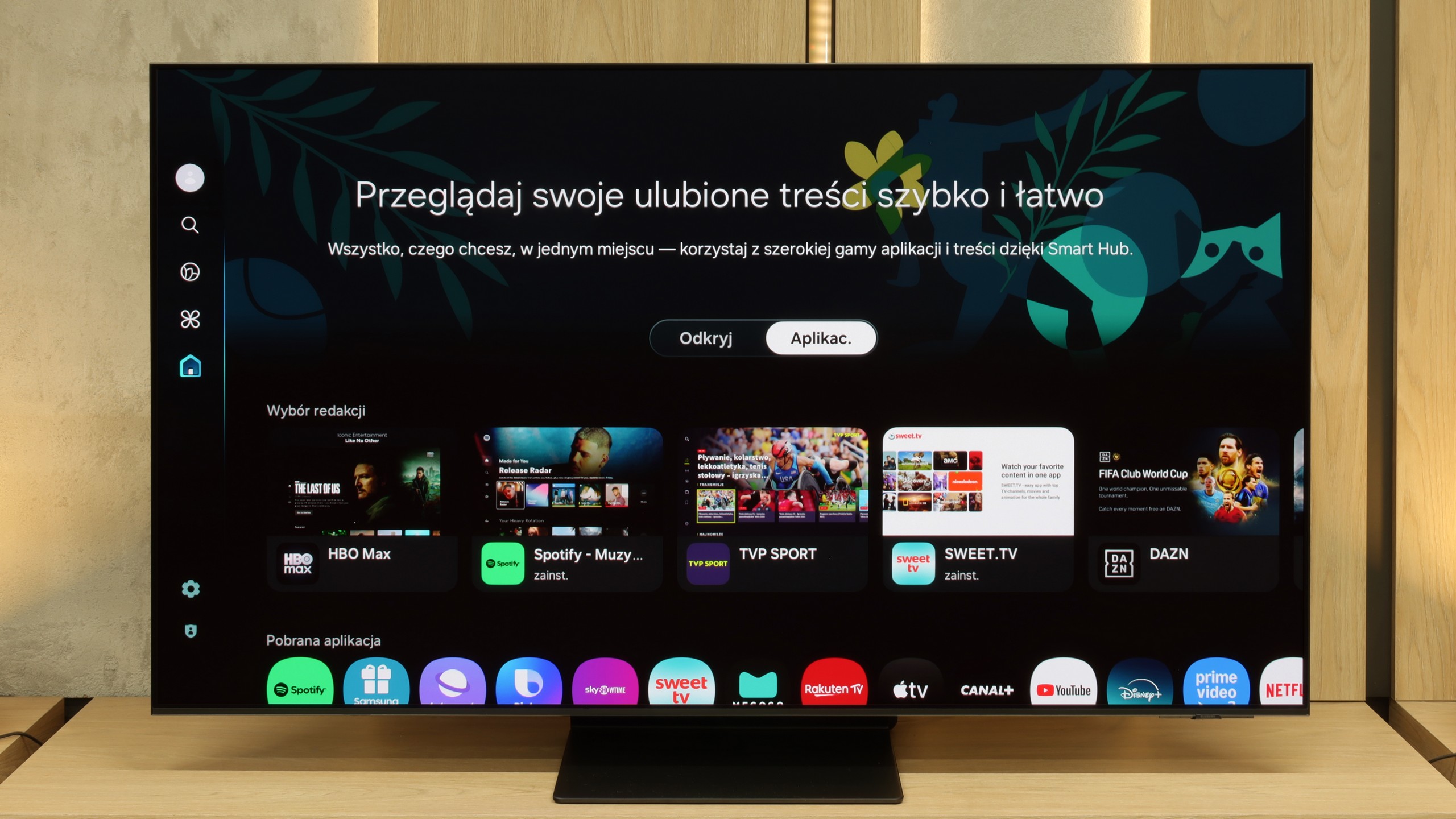
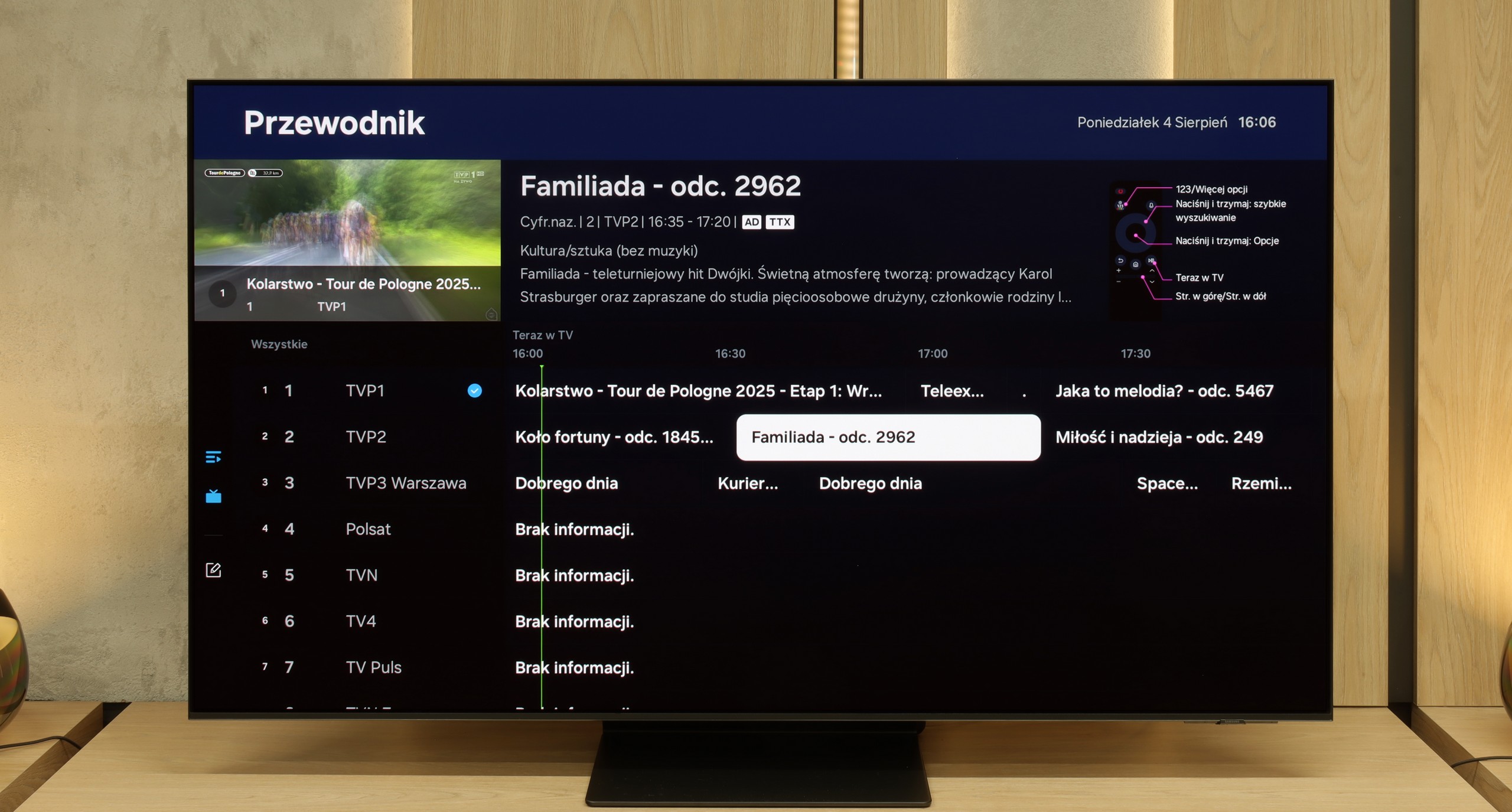
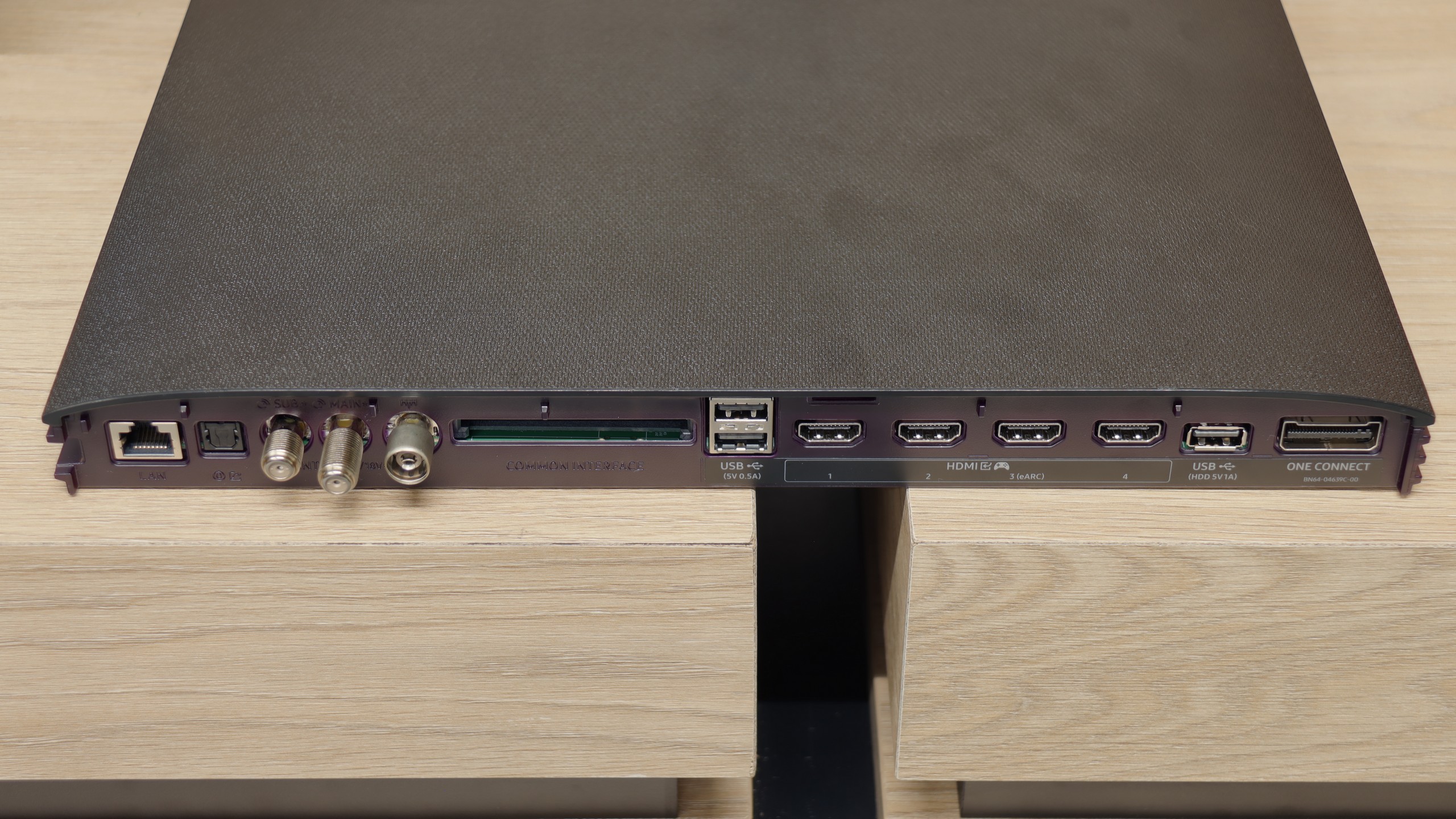
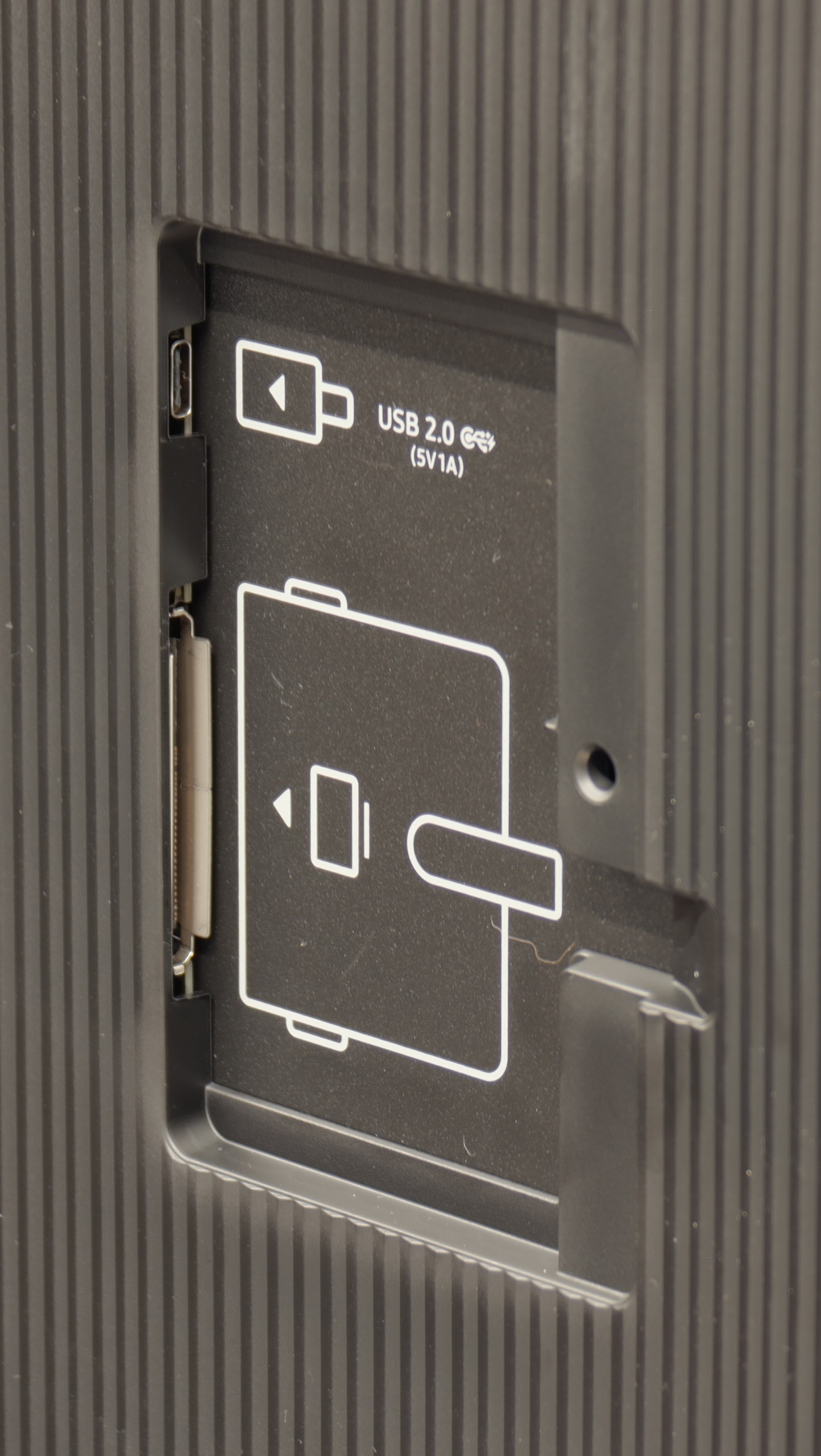
Bravia 9 runs on the Google TV system, which is a significant advantage compared to TVs equipped with proprietary systems from manufacturers, where installing applications from a USB drive can be difficult, and often downright impossible. With Google TV, we have the ability to install virtually any application, both from the official store and directly from online repositories via an APK file.
This system also offers many conveniences in terms of control. We can connect a keyboard with a touchpad, which significantly makes entering queries much easier. Additionally, thanks to integration with Google, we can use voice control features via the remote, which works very well, although there are occasional minor issues with understanding functions and options. It's worth noting that Google TV receives regular updates that enhance functionality and introduce new options. We can also confirm that, according to reports from users of older models, the software has its off days and sometimes has a “bad day.”
In summary: Google TV is currently one of the most popular systems on the market. Thanks to its efficient CPU, it operates very smoothly, doesn’t freeze and has no issues with lagging for a significant portion of usage. It is definitely the best option for those who want to fully utilise the potential of their TV and value system openness.
SmartTV in S95F: Tizen
Compared to the competition, the Samsung S95F not only shines with its picture quality but also shows that smart features can be really well thought out. Tizen runs very quickly, doesn’t hang up, and gives the impression that everything is at your fingertips – from AirPlay to simple voice search, which works even when the remote goes missing. Admittedly, the system isn't open like Android, but to be honest, very few will notice any shortcomings here – there are plenty of apps, and additional features like integration with SmartThings only enhance the feeling of completeness.
Classic features of S95F
Interestingly, Samsung reminds us that a television is still a television. Therefore, alongside the modern gadgets, we also find the classics – PiP, teletext, and the option to pair headphones via Bluetooth. There’s no recording to USB from DVB-T/T2 tuners, but instead, we get a remote that can also manage the Canal+ decoder and other devices in the living room. And the cherry on top is the One Connect module – all connections in a separate box, making connecting devices no longer an extreme sport.
Playing files from USB
8.7/10
9/10
Supported photo formats:
Maximum photo resolution:

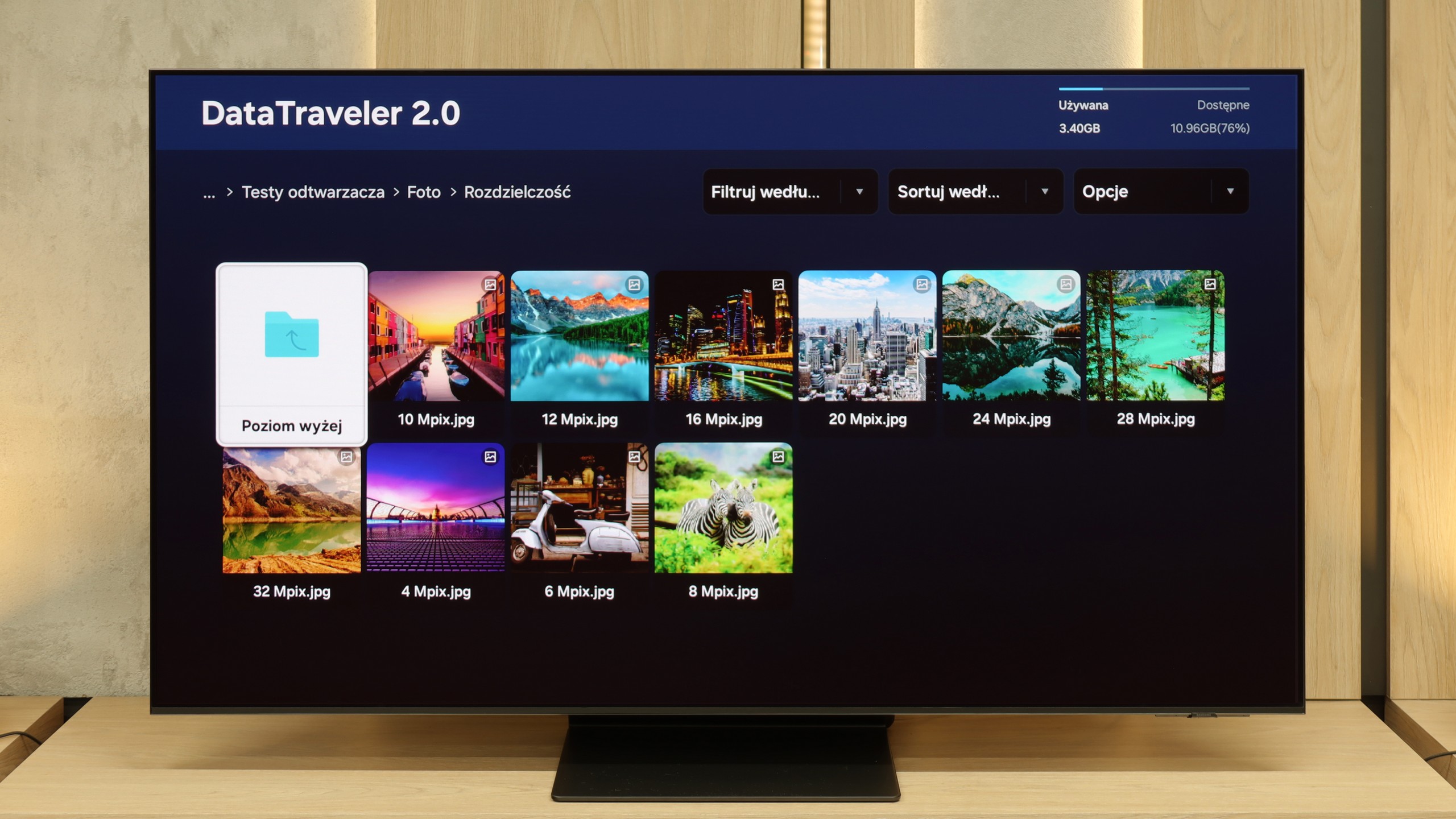
The built-in player in Sony Bravia 9 is quite good. While it’s not without its flaws, it must be said that it plays a significant portion of files without a hitch. However, among the missing features, the lack of support for subtitles in .sub, .txt formats or selectively working image formats can be bothersome, with only JPEG and HEIC available. This isn’t really a problem considering the ease of installing applications like VLC or KODI.
The built-in player in the S95F does the job – movies and music start without a hitch, so it's more than enough for everyday use. The trouble starts when we expect complete compatibility with what the manufacturer claims. Not all photo formats work, and HEIC files simply refuse to cooperate. However, for most people, this won't be an issue – for basic applications, such a player performs flawlessly.
Apps
9.6/10
8.7/10














































Sound
9.4/10
8/10
- Subjective sound quality:9.4/108/10
- Dolby Digital Plus 7.1:
- Dolby True HD 7.1:
- Dolby Atmos in Dolby Digital Plus (JOC):
- Dolby Atmos in Dolby True HD:
- DTS:X in DTS-HD MA:
- DTS-HD Master Audio:
We must admit that the sound coming from the Sony Bravia 9 left us quite astonished. Of course, we knew it was a top-of-the-line product, but we didn’t expect such sound quality. You can easily hear each instrument individually, and the bass adds the right depth to the whole experience. With a clear conscience, we can say that this is the best sounding television we have had the chance to test. Of course, we realise that people opting for such a television already have their own home theatre setup. And here there won't be any major obstacle, as the Bravia 9 supports DTS-HD Master Audio and Dolby Atmos.
The built-in speakers of the S95F can be surprisingly good – they sound pleasant and clear, and despite the slim design of the TV, it's hard to say the audio is flat. Sure, there could be more bass, but that’s a natural compromise with such a thin casing. For everyday watching of movies or series, the set works excellently. Those who enjoy stronger experiences should consider a soundbar – preferably one with Q-Symphony support. Then the TV speakers and the Samsung soundbar work together.


